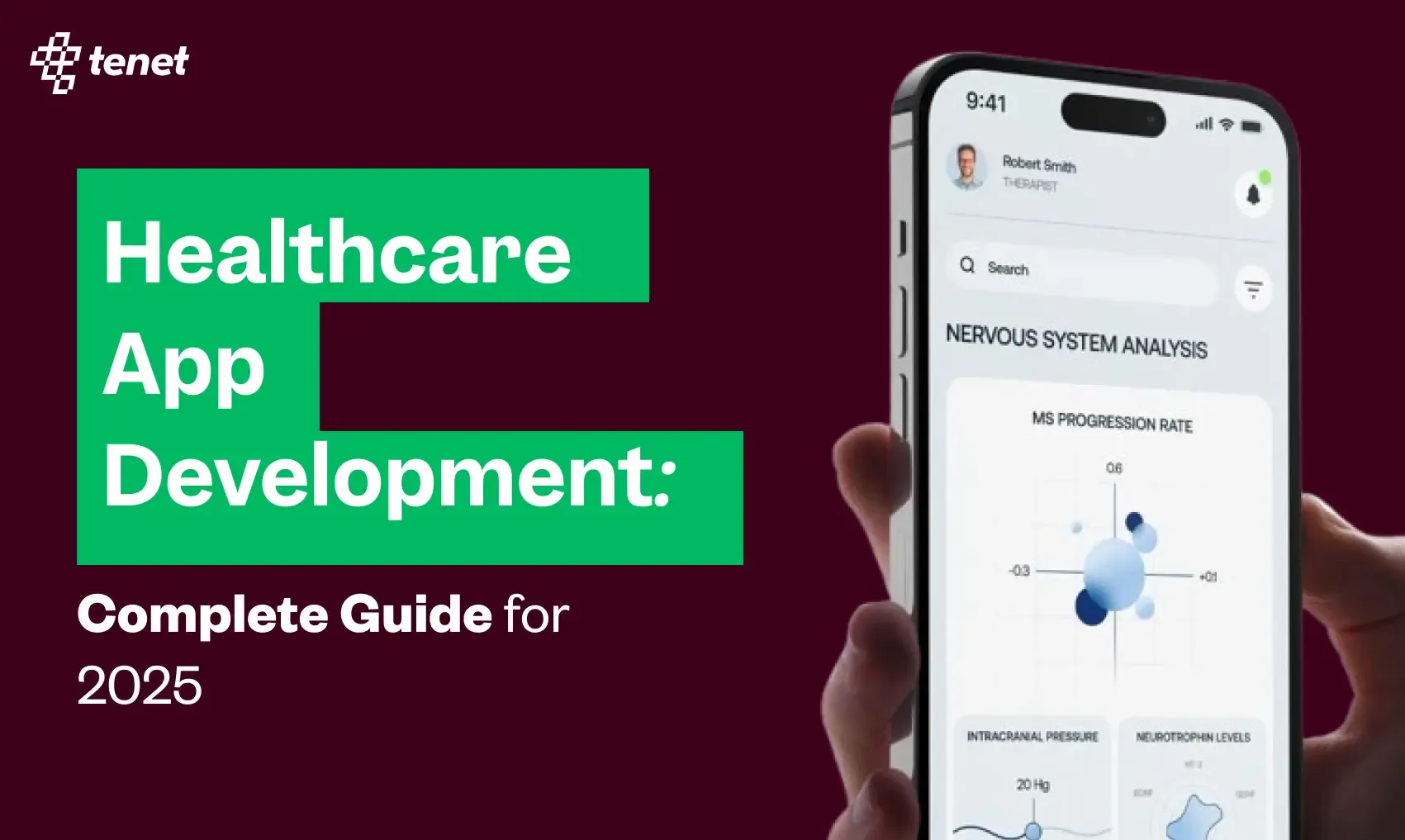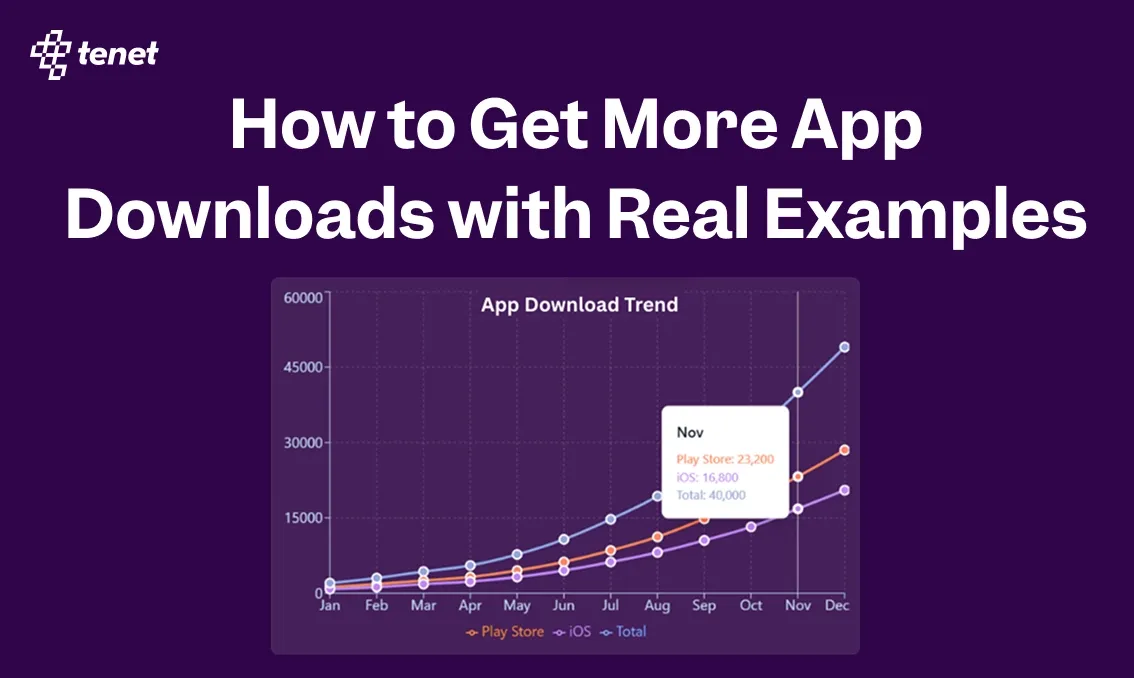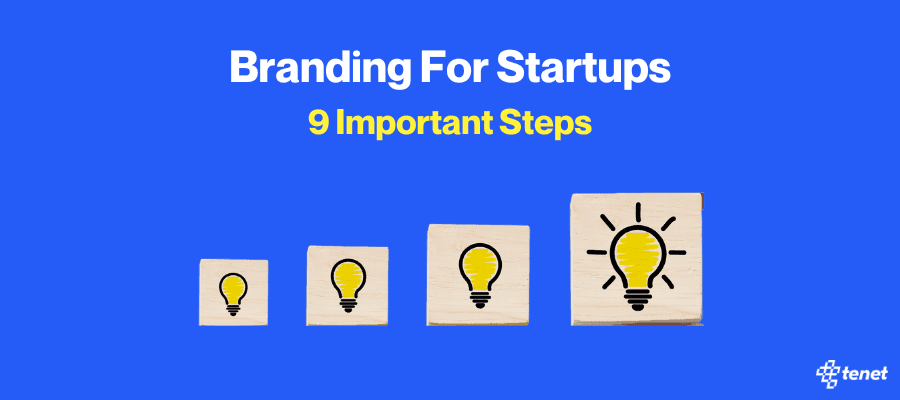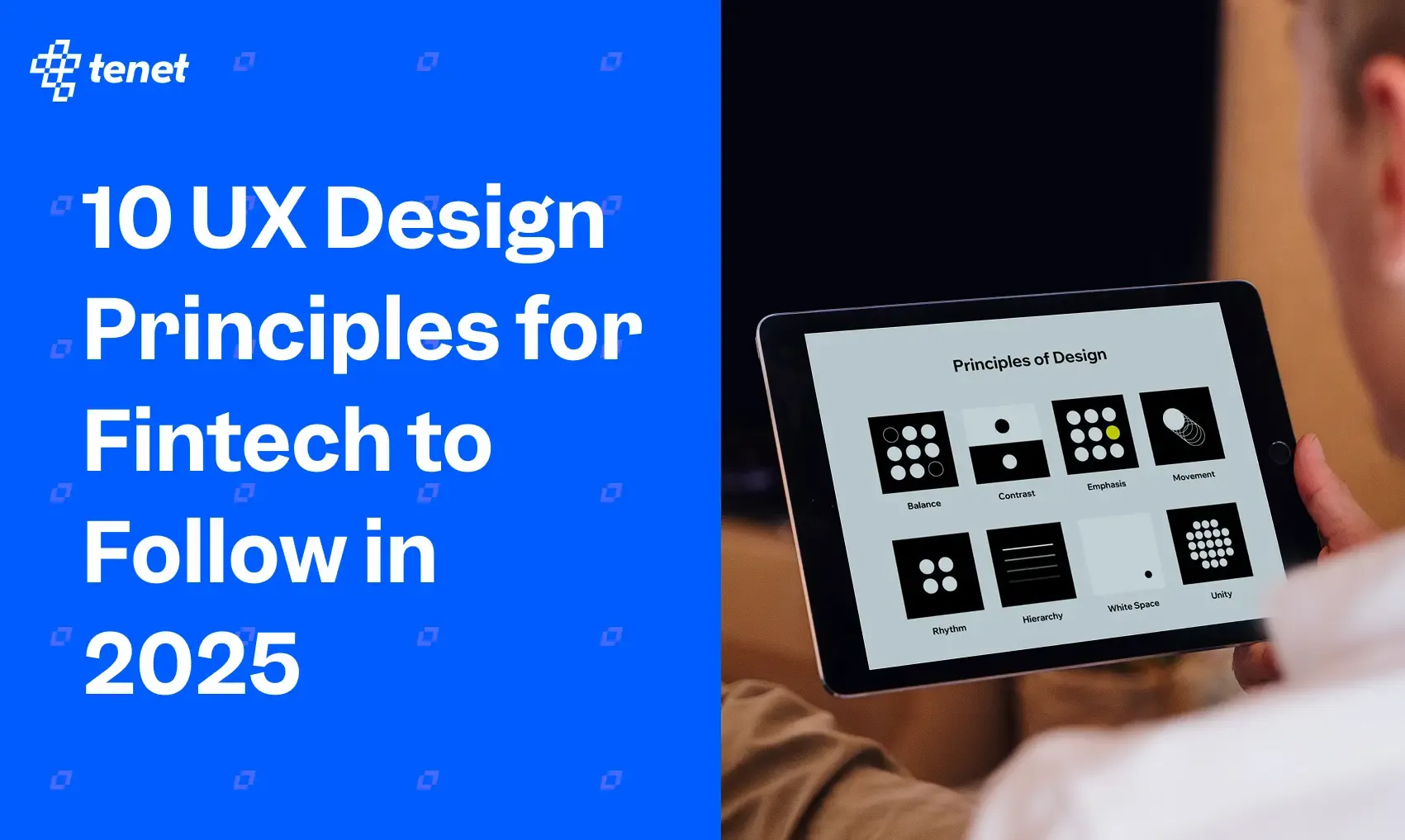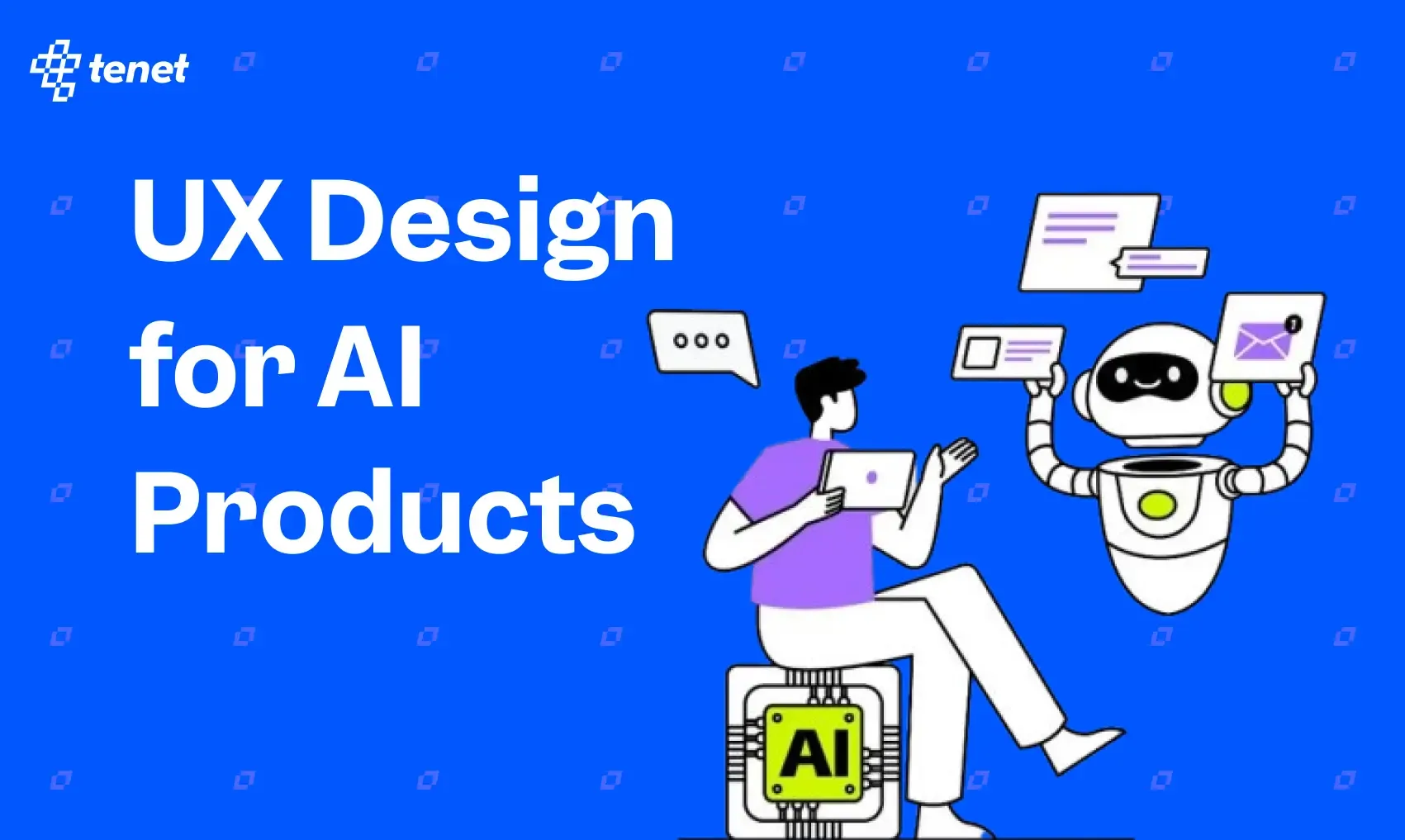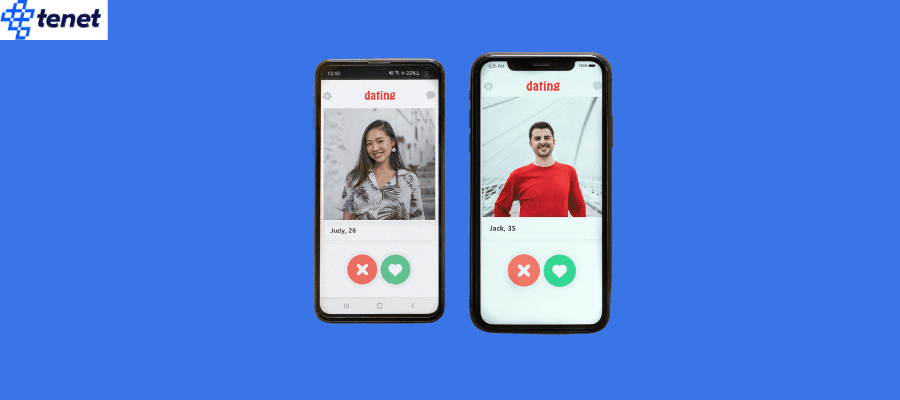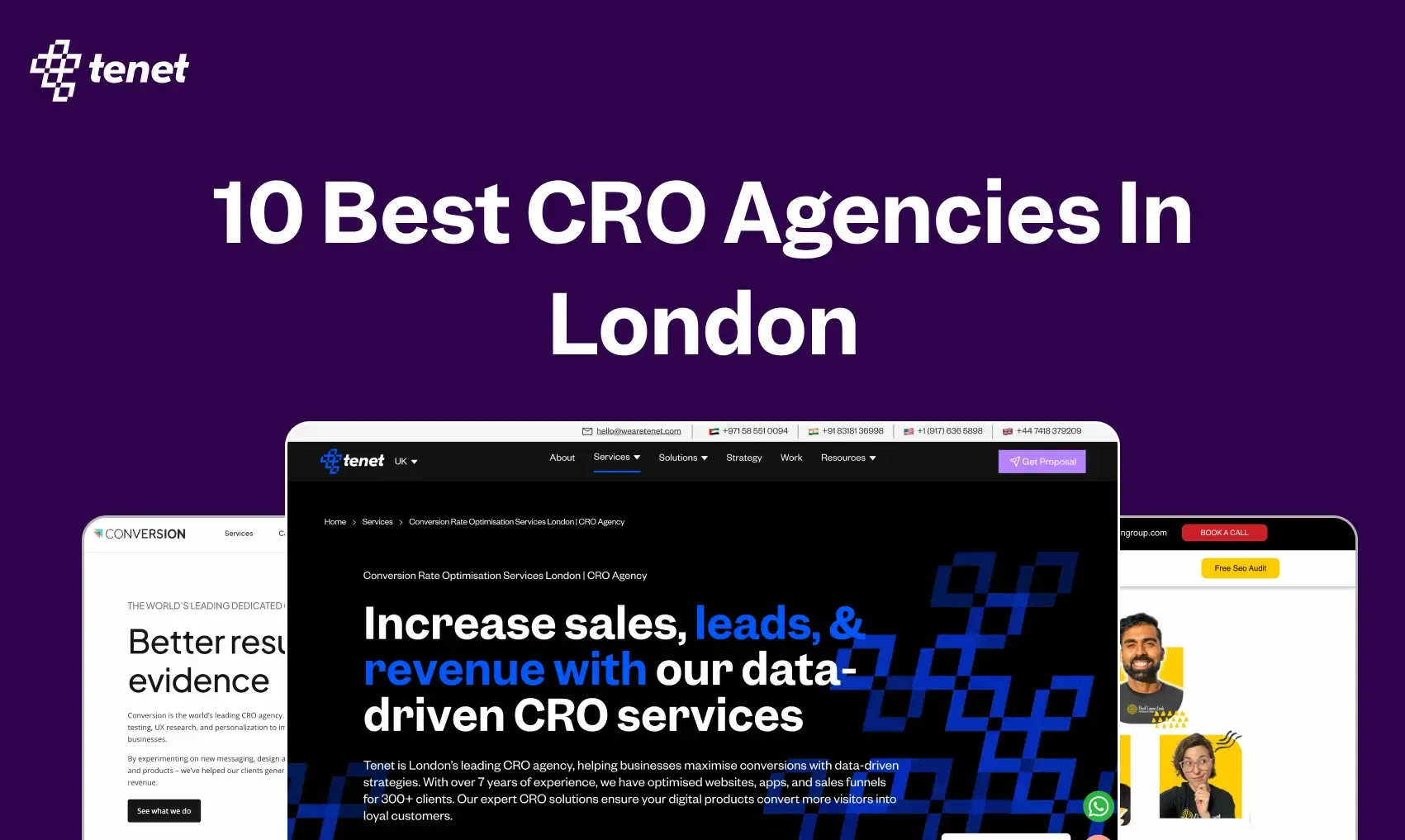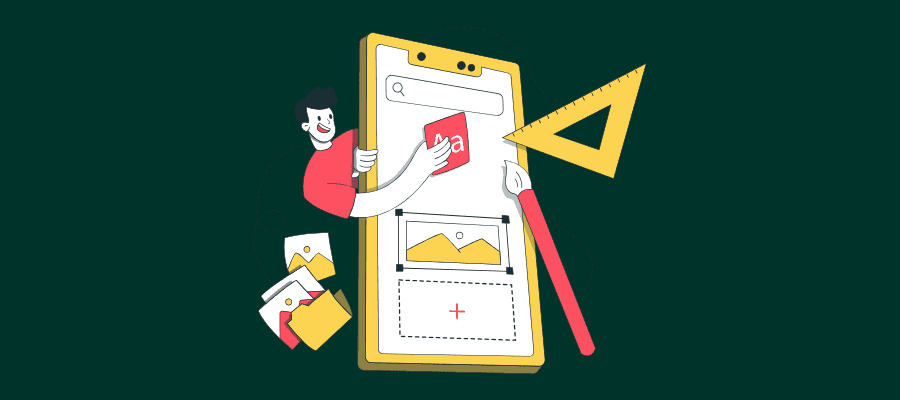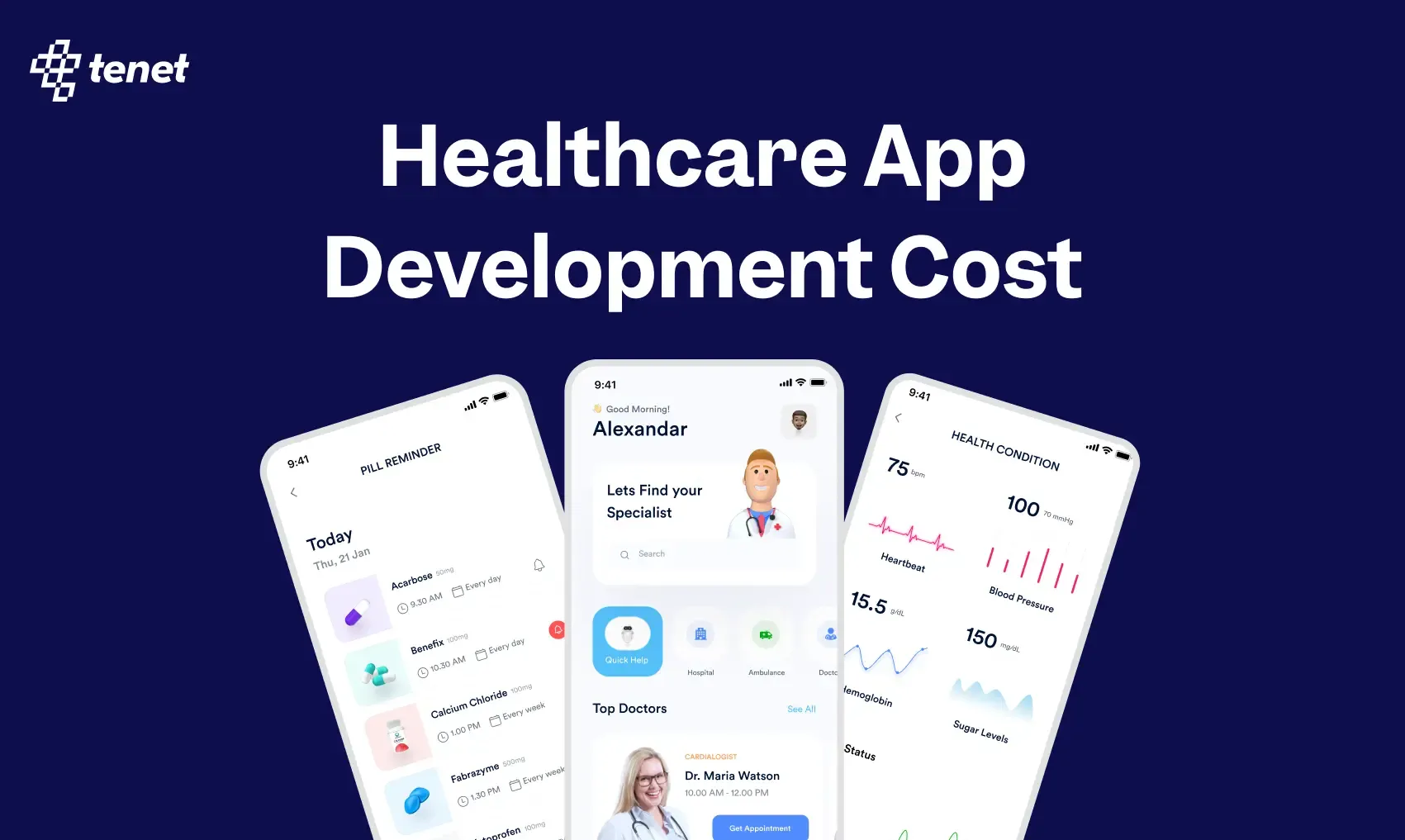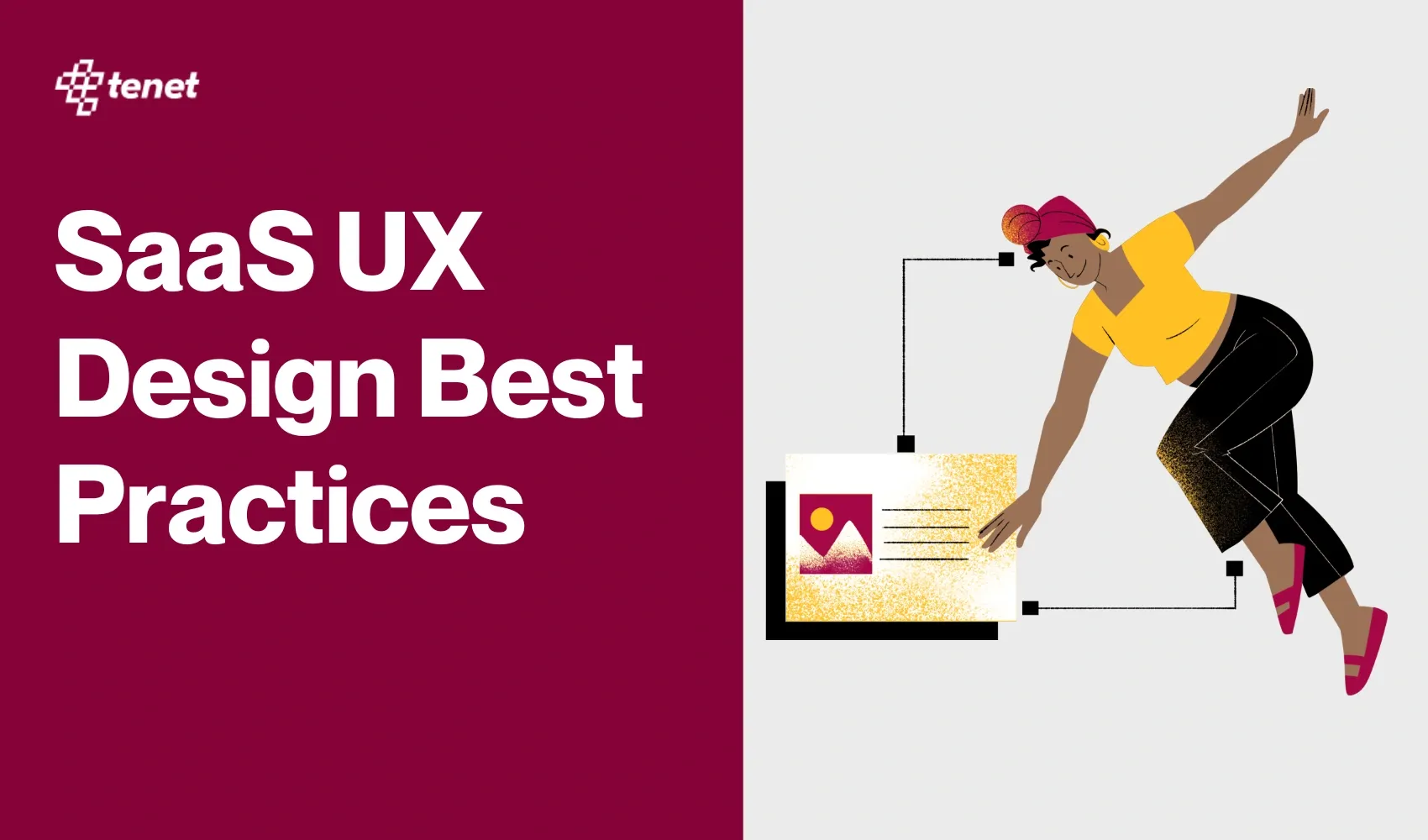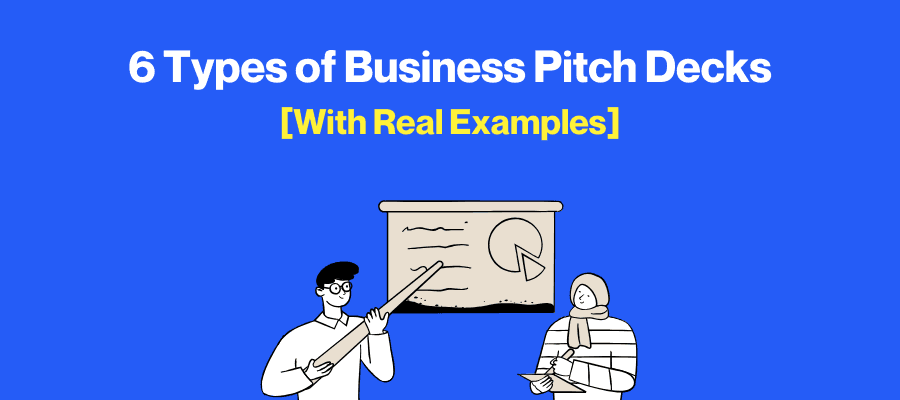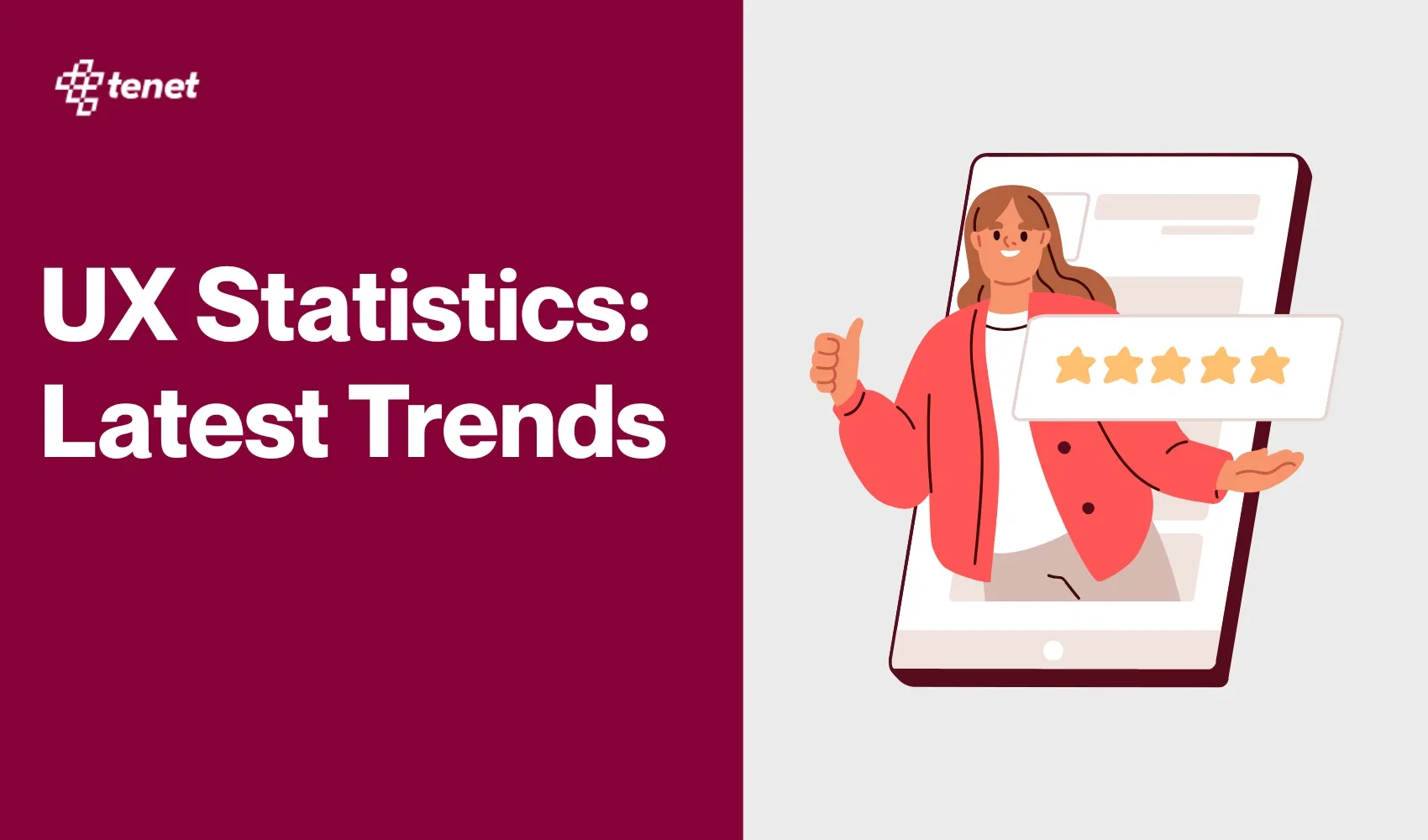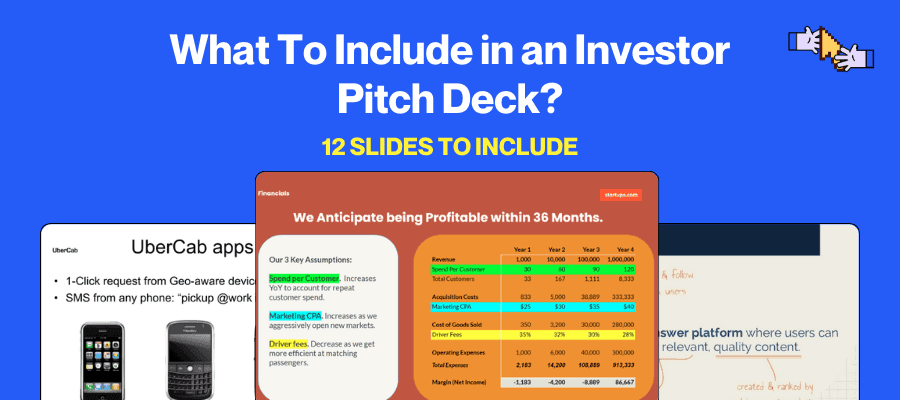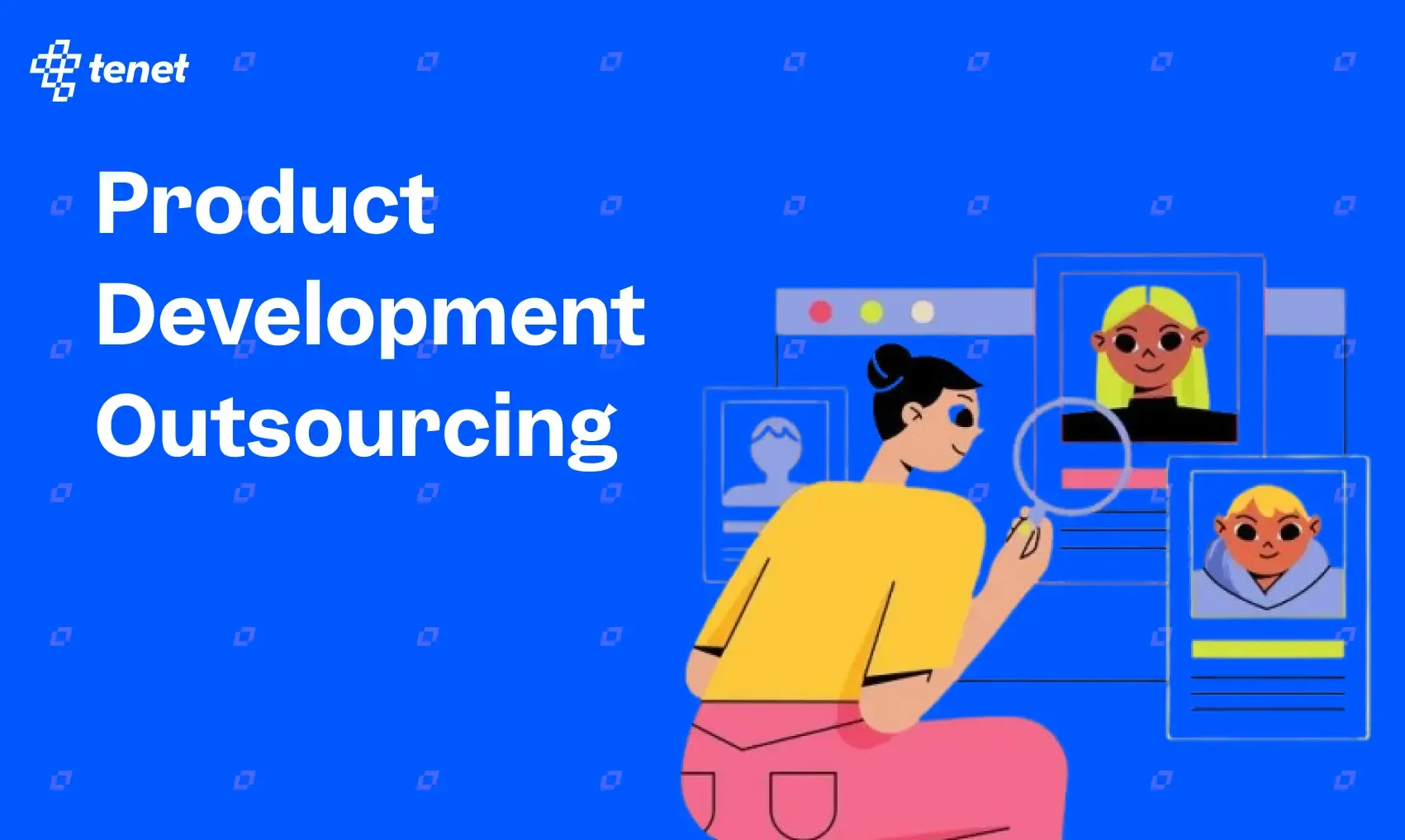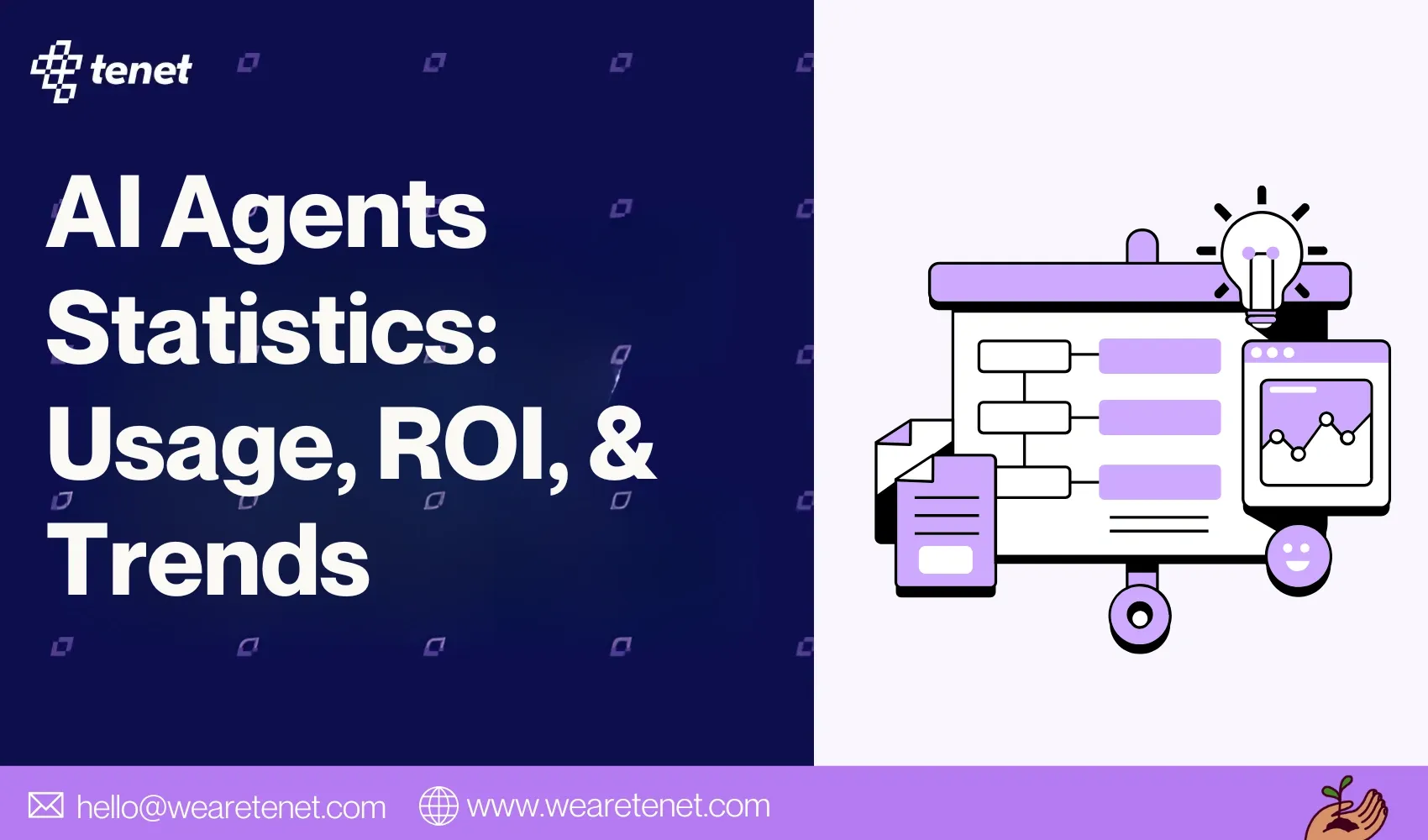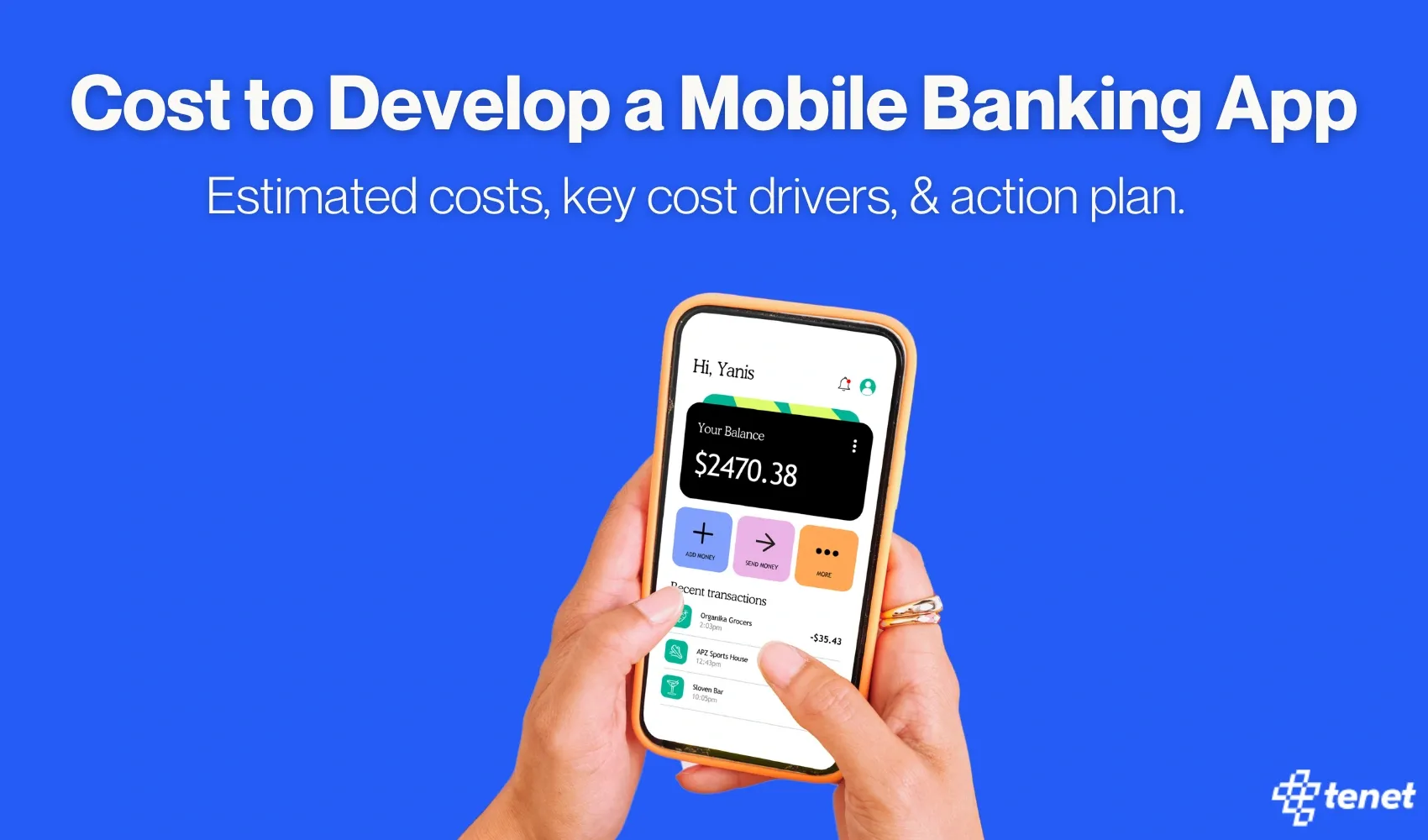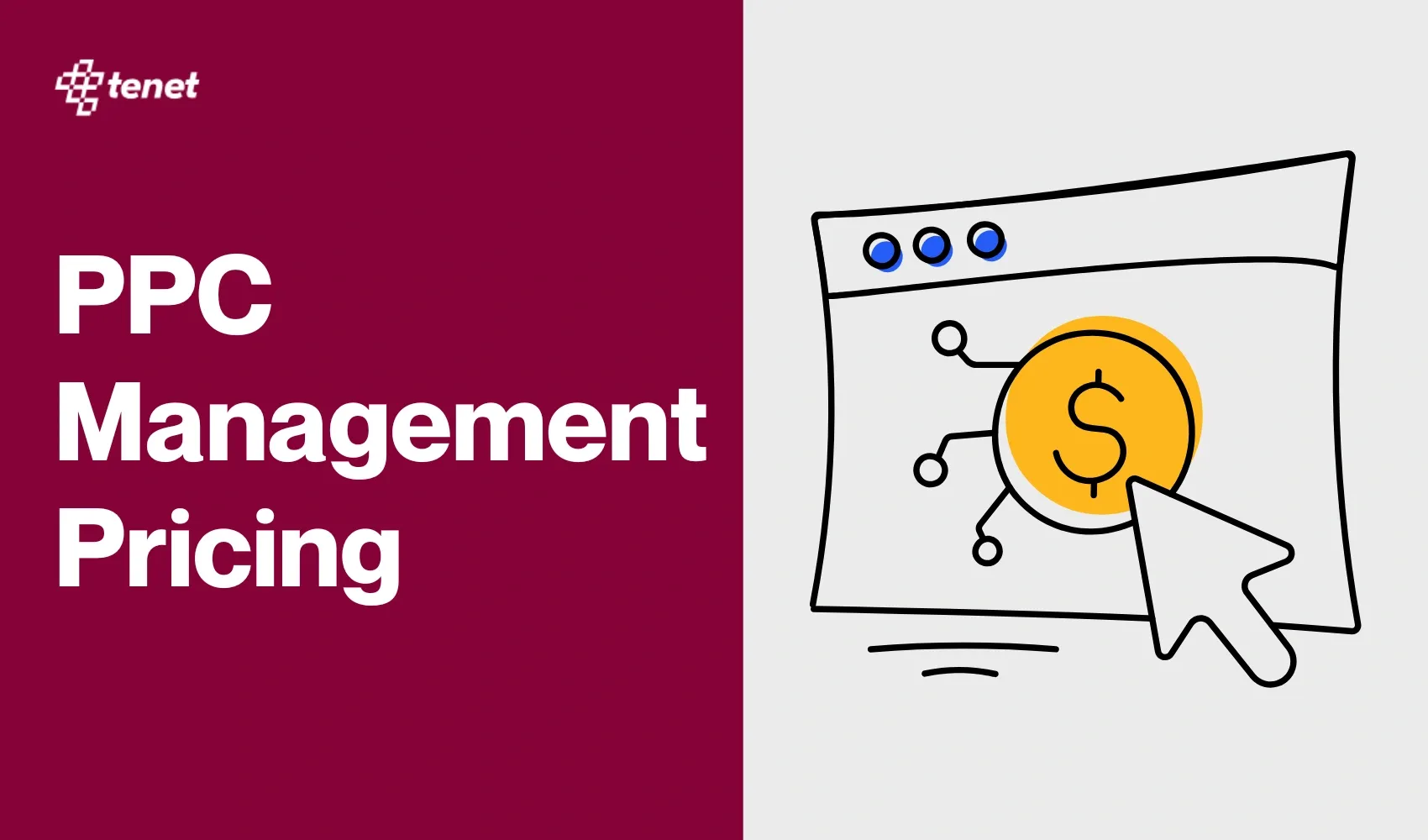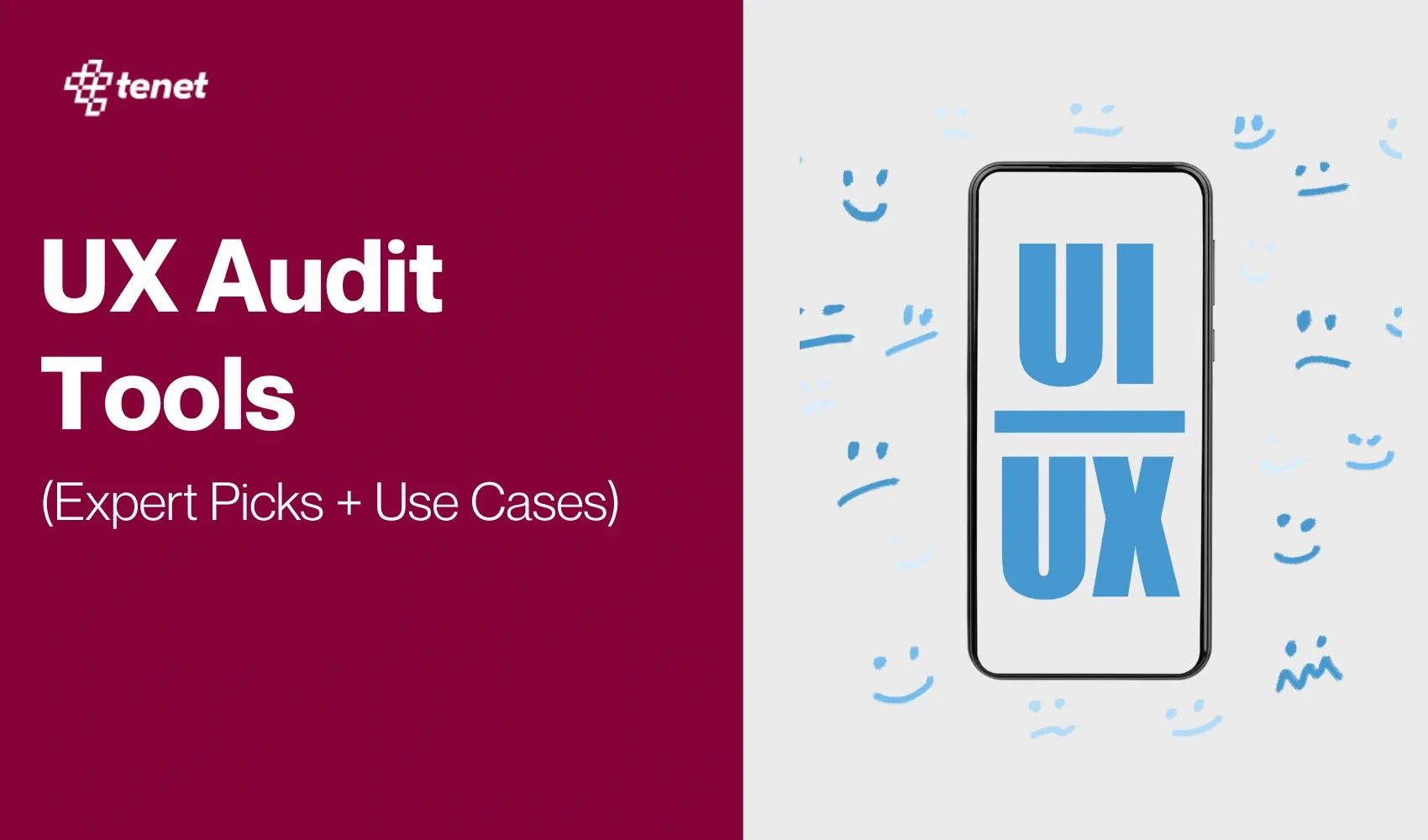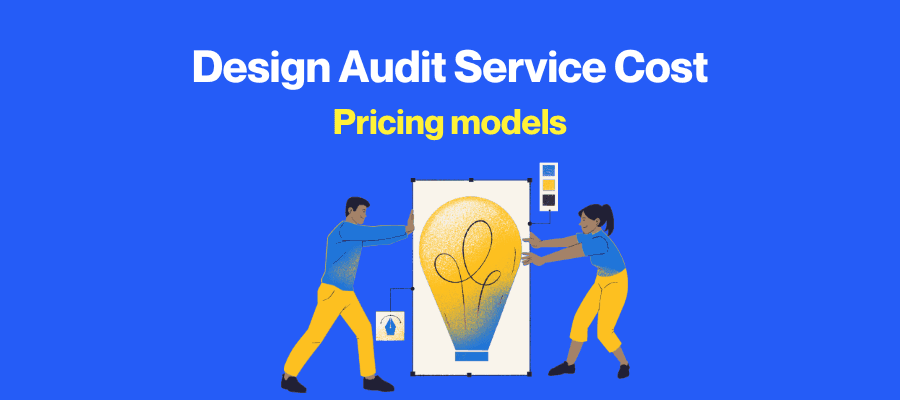How to Make an App Like Zomato (7 Actionable Steps)
Share
Share

Creating an app like Zomato requires a mix of strategic planning, innovative design, and scalable development.
In this guide, we'll walk you through the essential steps to build a Zomato-like food delivery platform, from market research and legal compliance to UI/UX design and feature integration.
Whether you're a startup or an established business, this article will provide actionable insights to help you tap into the growing online food delivery market.
Key steps to develop an app like Zomato
💡 Here are our services that will help you build your food-ordering apps:
Step 1: Research about the Zomato App
While cloning an application, you must know how it works, what the market demands are, and what its special features are. Conducting thorough market research on the Zomato app is a must when designing a similar application.
Questions to focus on:
- Who is the target audience?
- What is the market demand for food delivery apps?
- What features of Zomato make it different from other apps?
- What market opportunities exist for a new food delivery app?
The global online food delivery market will increase by 10.06% CAGR from 2024 to 2031, reaching $412.80 billion in 2031. This means that creating a similar application has a better opportunity to grow in the coming years.
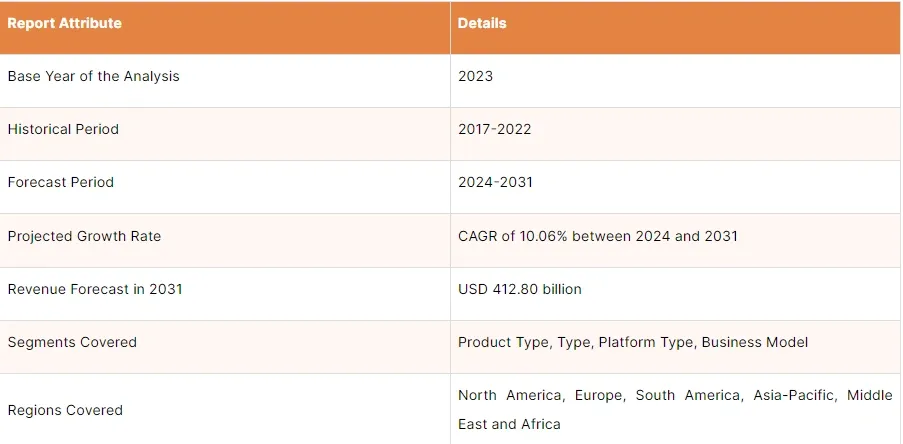
The target audience of food delivery apps is different.
For example, if you look into a gourmet and premium food delivery app like Goldbelly or Caviar, their target audiences are affluent consumers, food enthusiasts, and corporate clients.
However, Zomato is a restaurant aggregator and online food delivery app whose target audience can be anyone.
You can use Google Trends to analyse Zomato’s market trends and the online food delivery market.
For example, you can search for items like “Zomato,” “online food delivery,” “cloud kitchen,” etc.
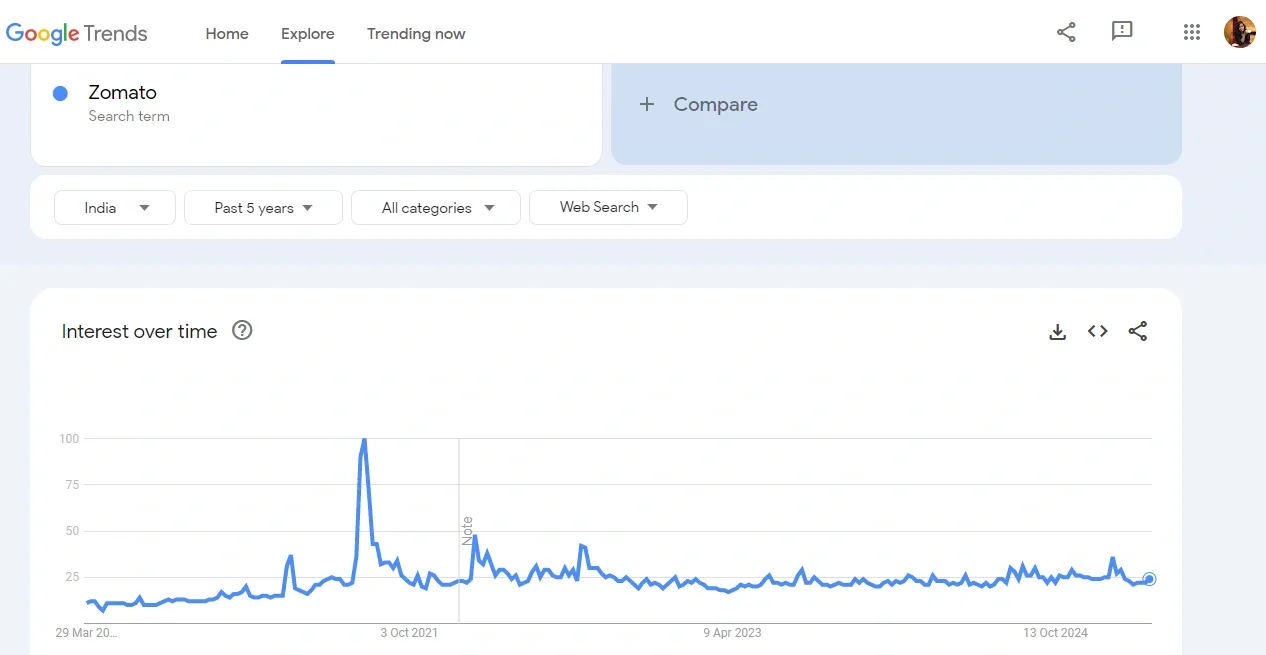
PRO TIP:
Look for questions people ask about your competitor's app to understand the real problems and challenges of your target audience. You can use search operators to dig into Quora or Reddit like this:
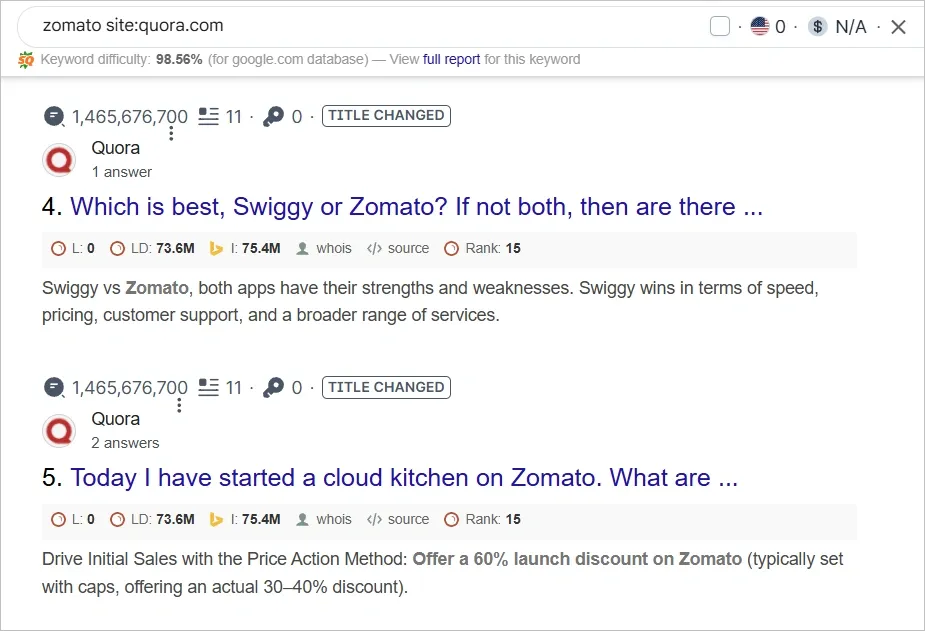
Step 2: Check for online food delivery laws and regulations
To start an online food delivery service in India, you need a license from the FSSAI (Food Safety and Standards Authority of India).
If you check out the Zomato app, you will find that the license number is displayed on the Licenses and Registrations page.

You can also check the restaurant listings. Each restaurant listed on Zomato has an FSSAI license, along with other information requirements.

Some of the other essential laws you need to follow are:
If you have proper knowledge of the legal requirements to run a Zomato-like application, you won't face operational disruptions.
When we researched the Zomato licenses, we were impressed with all the measures it takes for gift cards, train orders, Zomato money, games, Zomato for enterprises, etc.
Step 3: Define the key features
The most essential step in cloning an application is learning about all its features and deciding on the key ones.
However, we recommend using all the features of Zomato within your application. This is because Zomato has all the required features in its app.
Here are the key features of the Zomato app:
Zomato has some unique features:
- Table booking: You can book a table online, select the number of guests, select a date and time, and take advantage of special discounts.
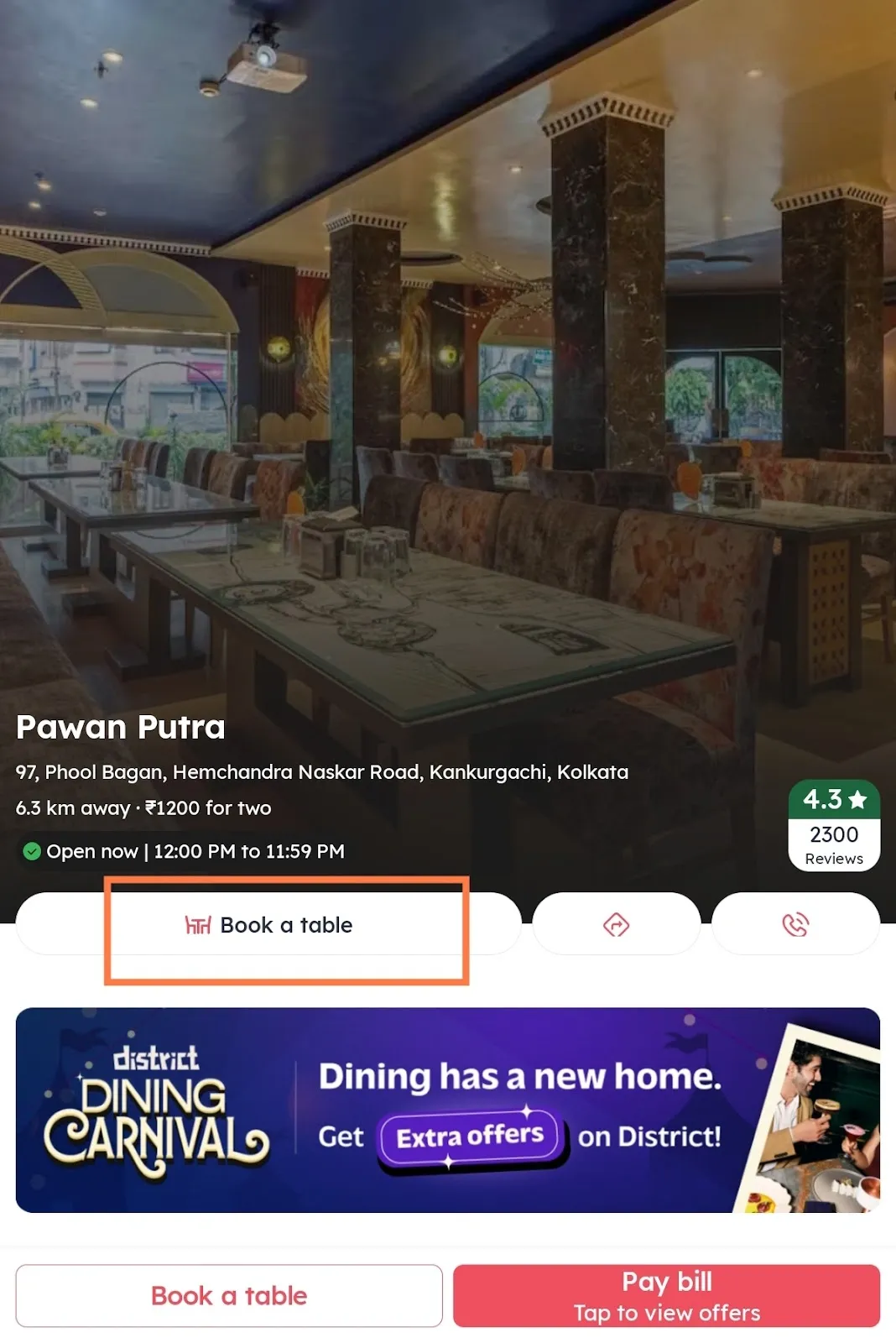

- Schedule delivery: You can schedule your delivery for a later date with Zomato. For example, if your friend’s birthday is on the 1st of April, you can order her a cake on the 30th of March and select a time so that you don't miss out due to a tough schedule.
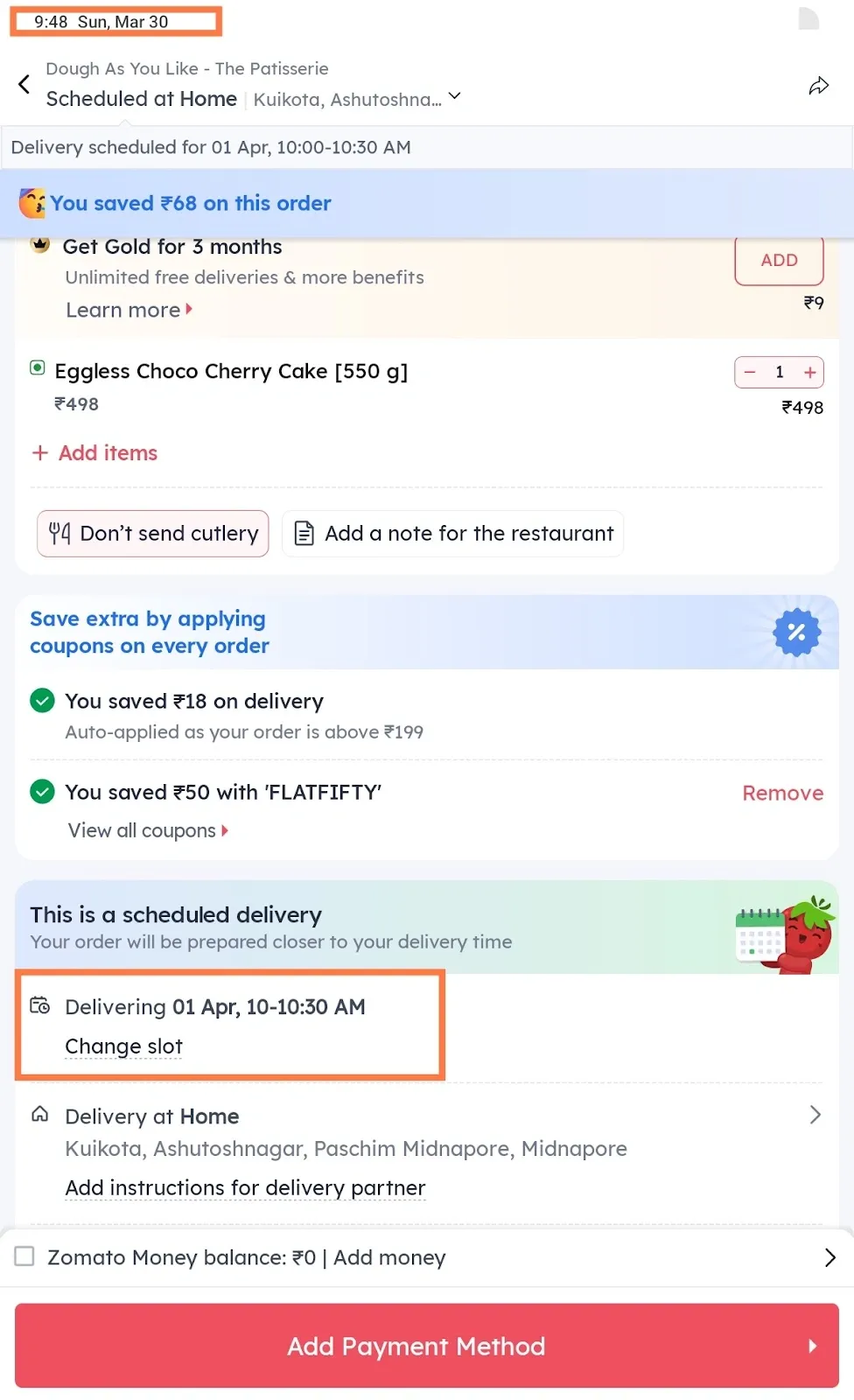
- Food on the train: You can enter your train PNR number, and when the train arrives at the next station, you will get your food delivered to your seat. You can also plan your meals four days in advance.
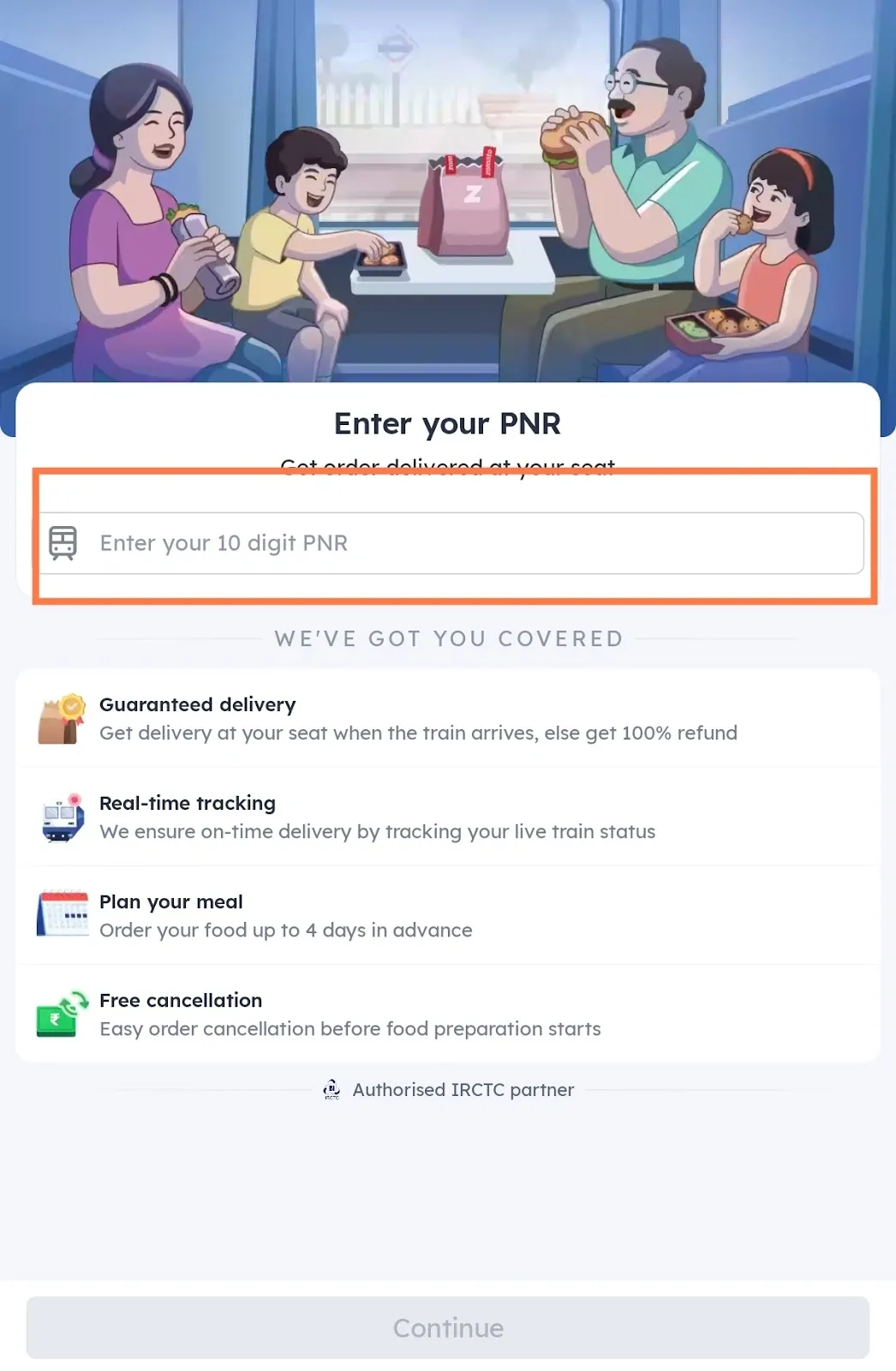
- Special offers: It offers a range of coupons for customers that can reduce your food costs at different restaurants.
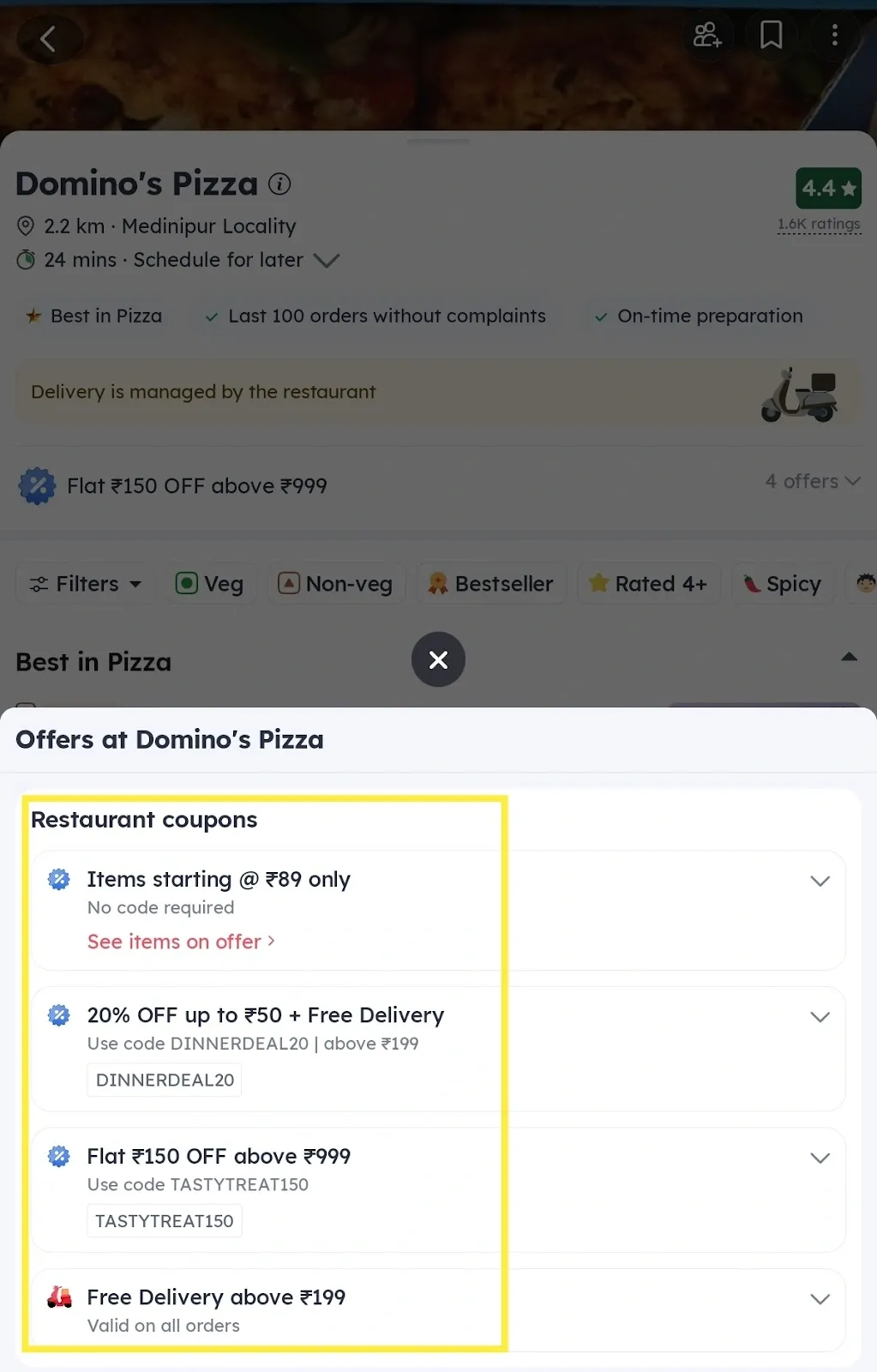
Besides this, Zomato has introduced its Gold membership offer. For three months, you pay ₹9 and get amazing offers.
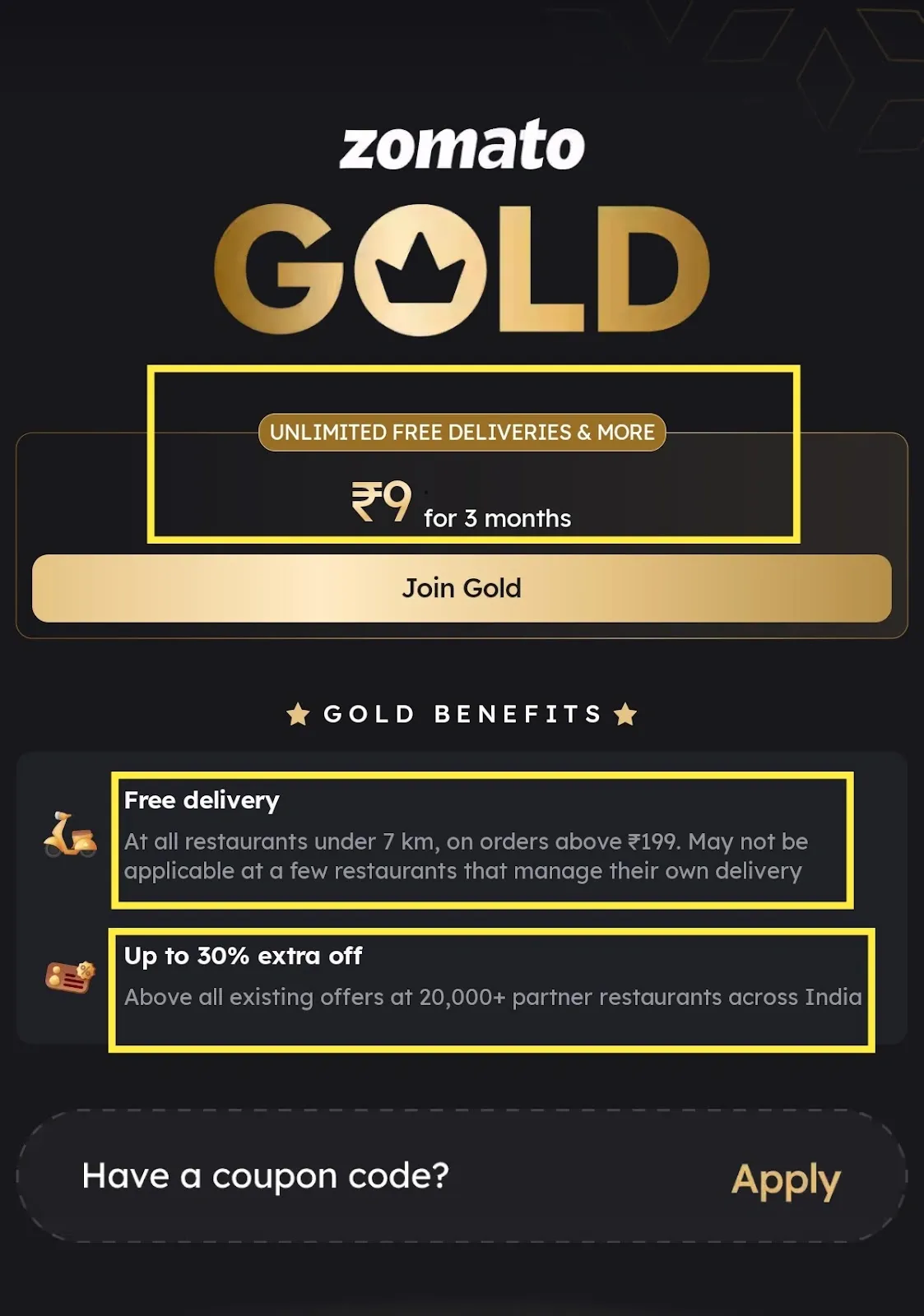
- Donate to Feed India: Zomato added this Feeding India feature, where you can choose to contribute a small amount with your order. Zomato creates a fund and contributes to feeding nutritious meals to children.
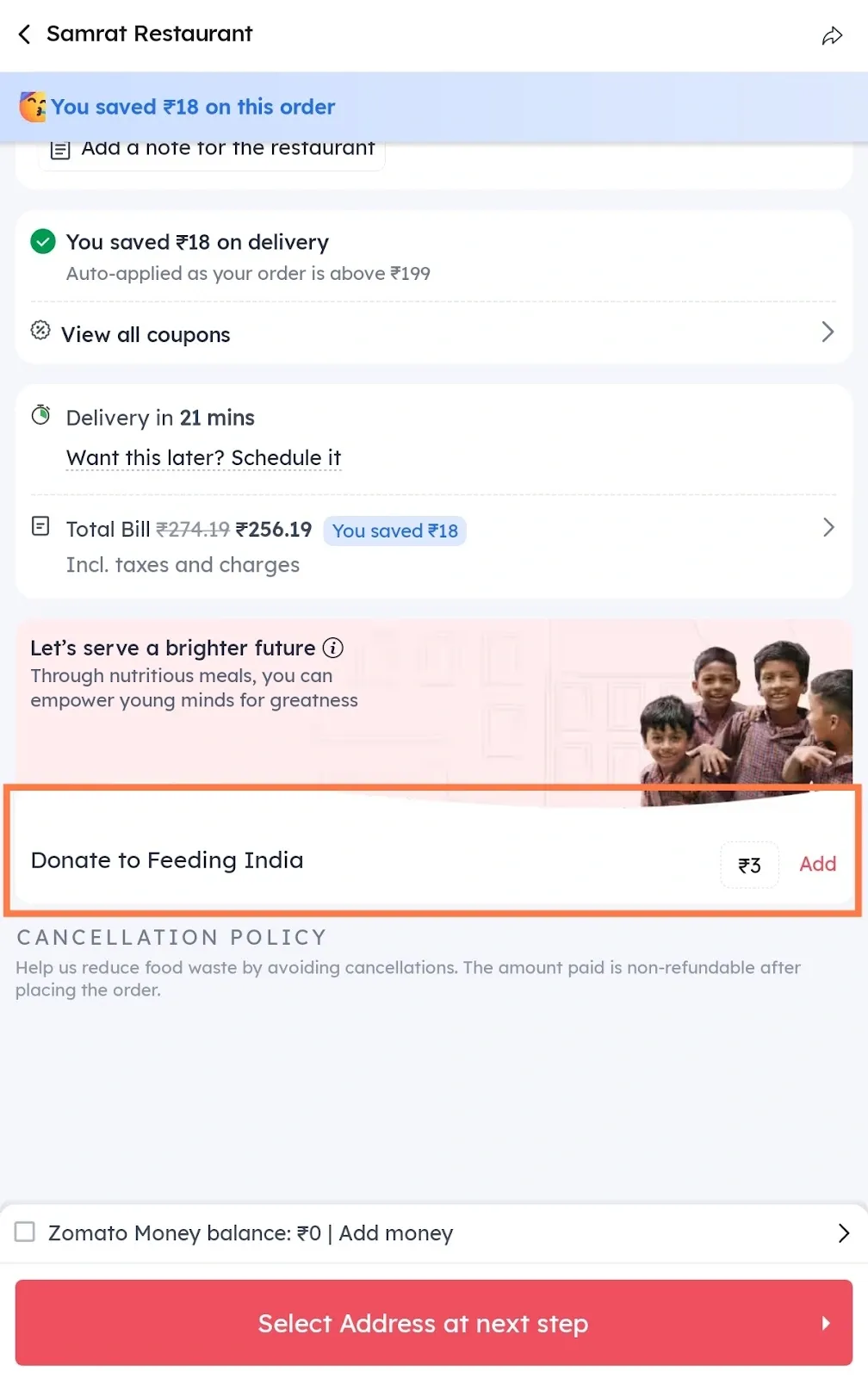
Customers can keep track of the details of how their contributions are making people happy.
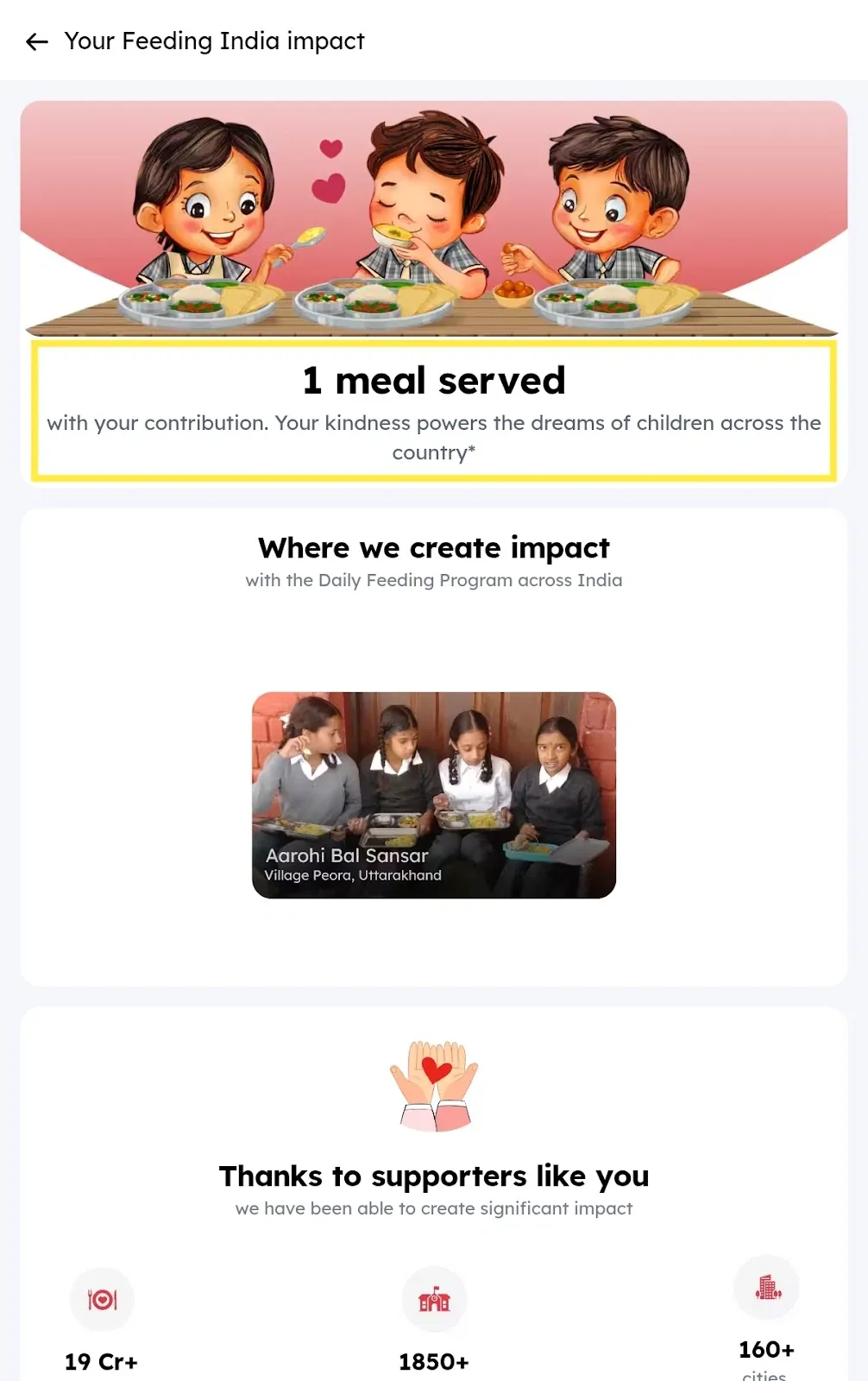
Step 4: Focus on the UI/UX design of your application
You need to focus on the UI/UX design of your application to ensure a seamless and engaging user experience. This leads to customer satisfaction and retention.
Effective UX design streamlines ordering, payment, and delivery or address tracking processes, improving the app's usability.
Additionally, personalisation, intuitive interactions, and responsive layouts enhance user engagement, making the app more enjoyable.
Let us see how Zomato creates an amazing user experience.
1. Homepage experience
The Zomato homepage showcases offers, food choices, choices for delivery and dining options, and a range of filters to choose restaurants and cuisines. At the top right corner, you can find the Zomato gold option. There is a list of restaurant and cuisine recommendations based on your past activity or recommendations from the contacts on your call list.
Your application needs this kind of homepage that gives users a complete view of what to order, what discounts to apply, membership plans, filters, restaurants people love the most, etc.
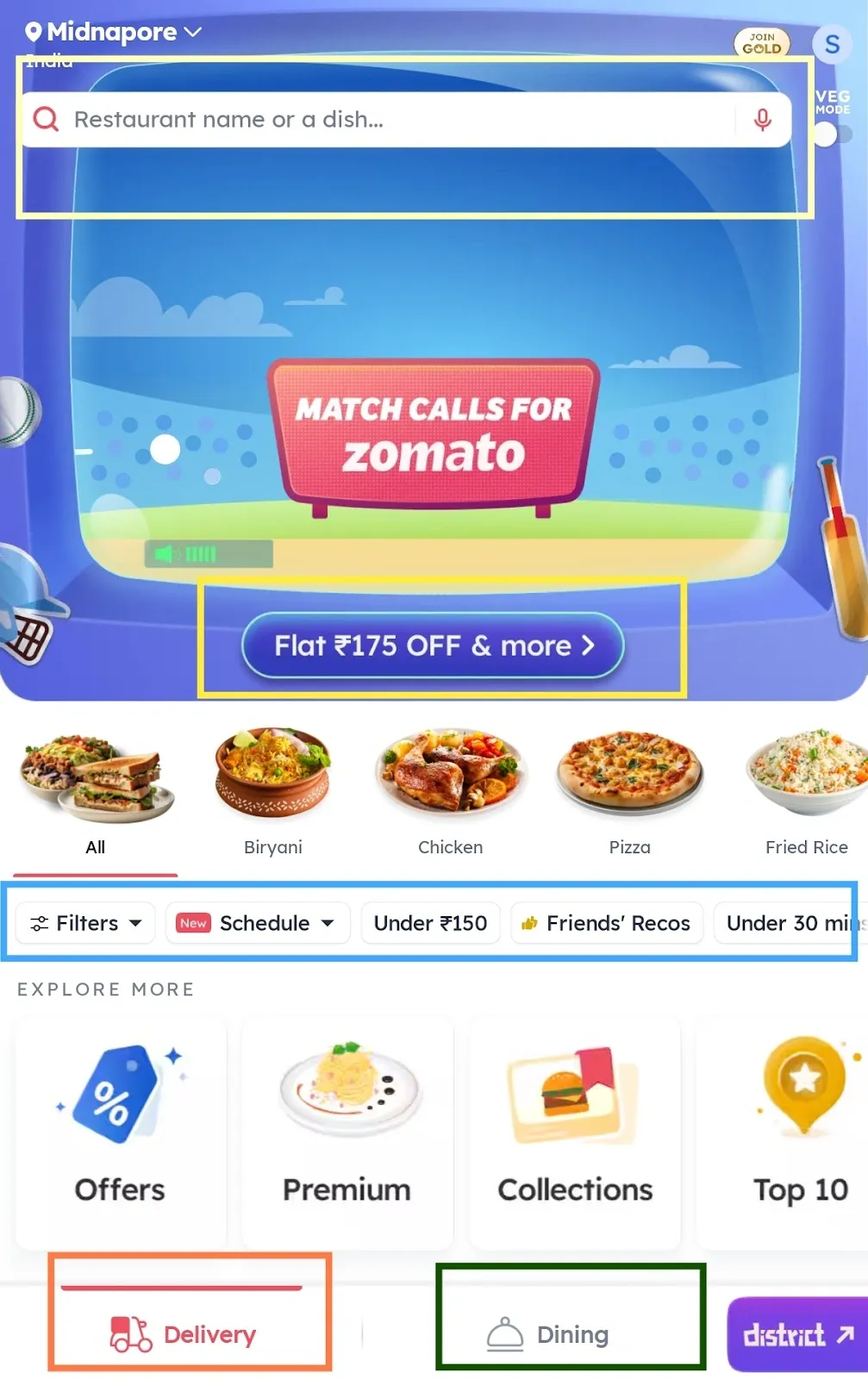
2. Browsing restaurants experience
You can see one restaurant at a time and scroll down your screen to look for others. This is eye-catching and provides bigger fonts to attract attention. You can search for different restaurants by using the search bar and use filters to choose the suitable ones. On the homepage, you can find highly rated restaurants listed along with their best item as reviewed by customers.
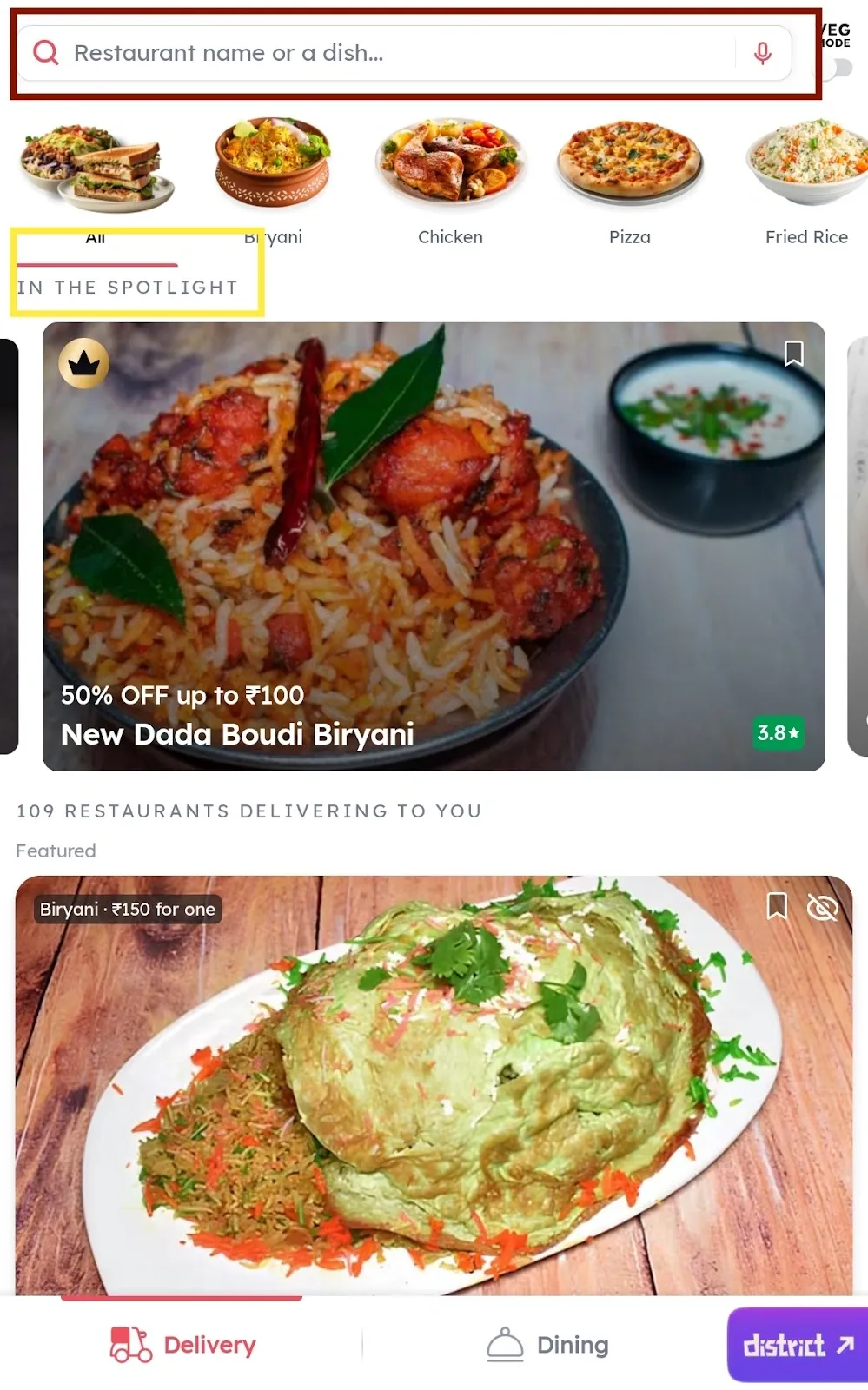
3. Browsing food menu experience
After choosing a restaurant, you can check its menu, prices, and customer ratings. Also, on the homepage, you can type the name of the food you are craving, and Zomato lists all the restaurants nearby offering the dish.
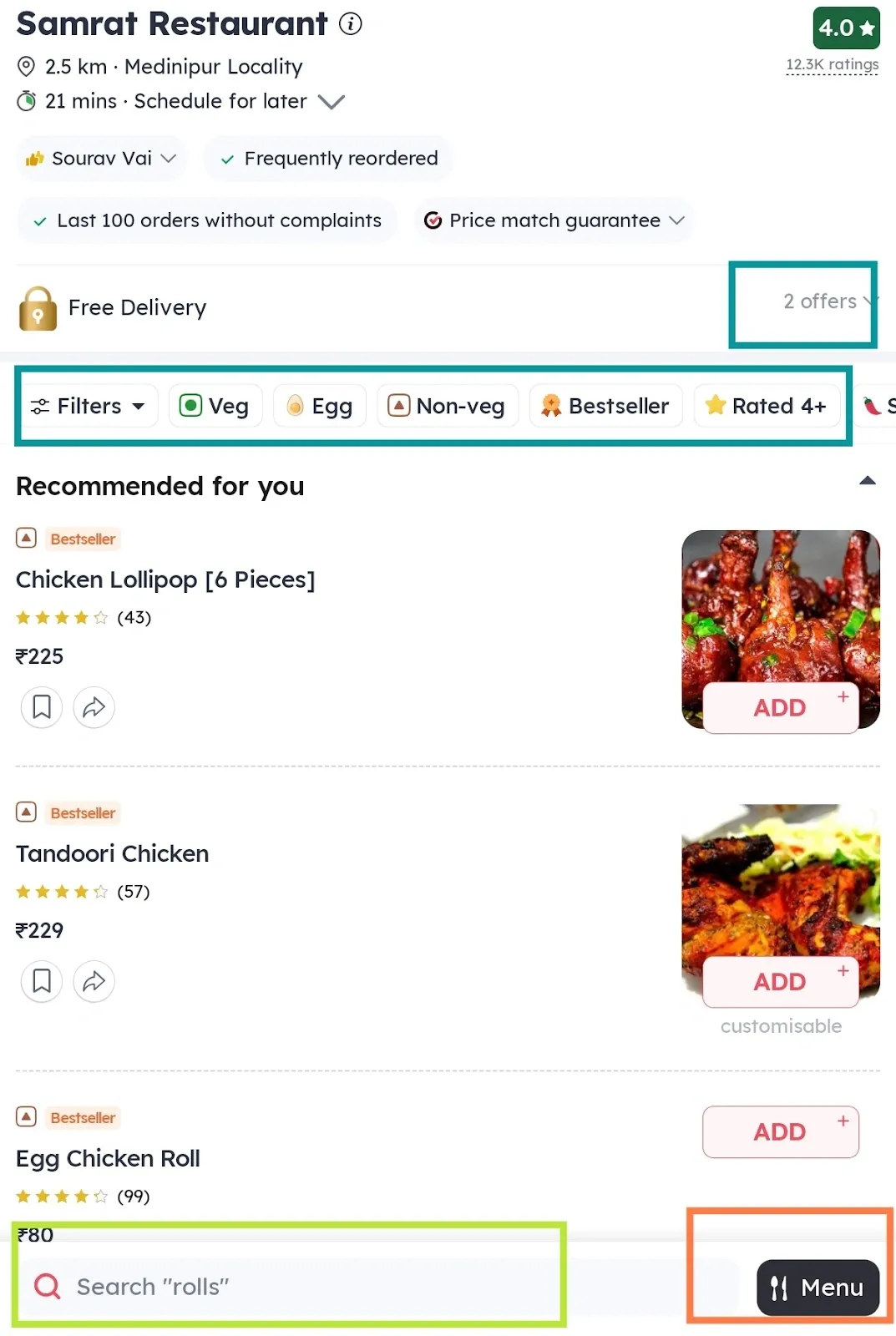
4. Cart page experience
You can add items and check the list from your cart. This page shows the total bill, deducting discounts and adding taxes, delivery partner fees, and other charges. You can see everything clearly, so Zomato ensures transparency and better user understanding of what they're ordering and the bill break.
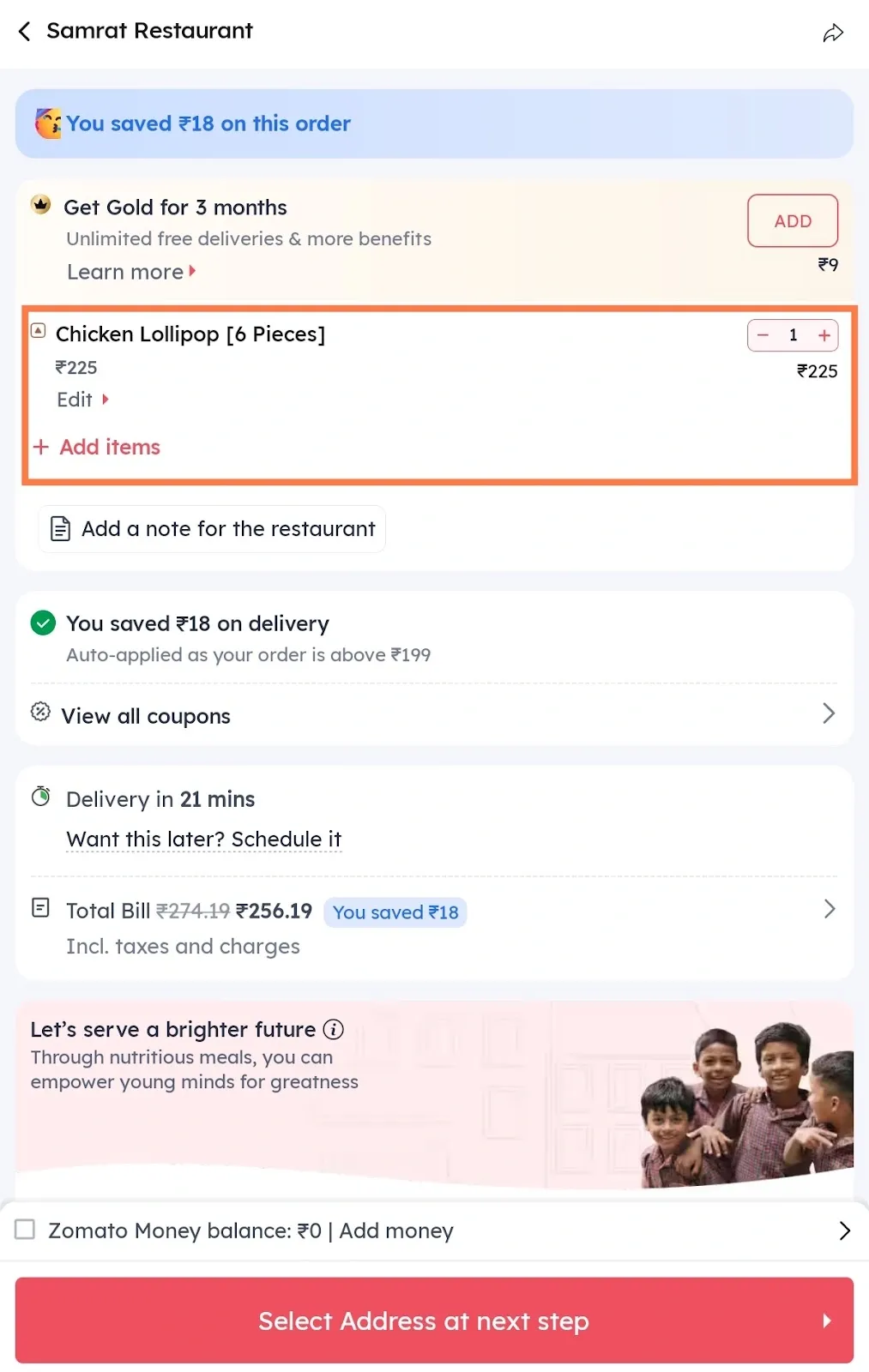
5. Coupon selection experience
Zomato offers a range of coupons for its customers. This page lists all the available coupons so you can choose one.
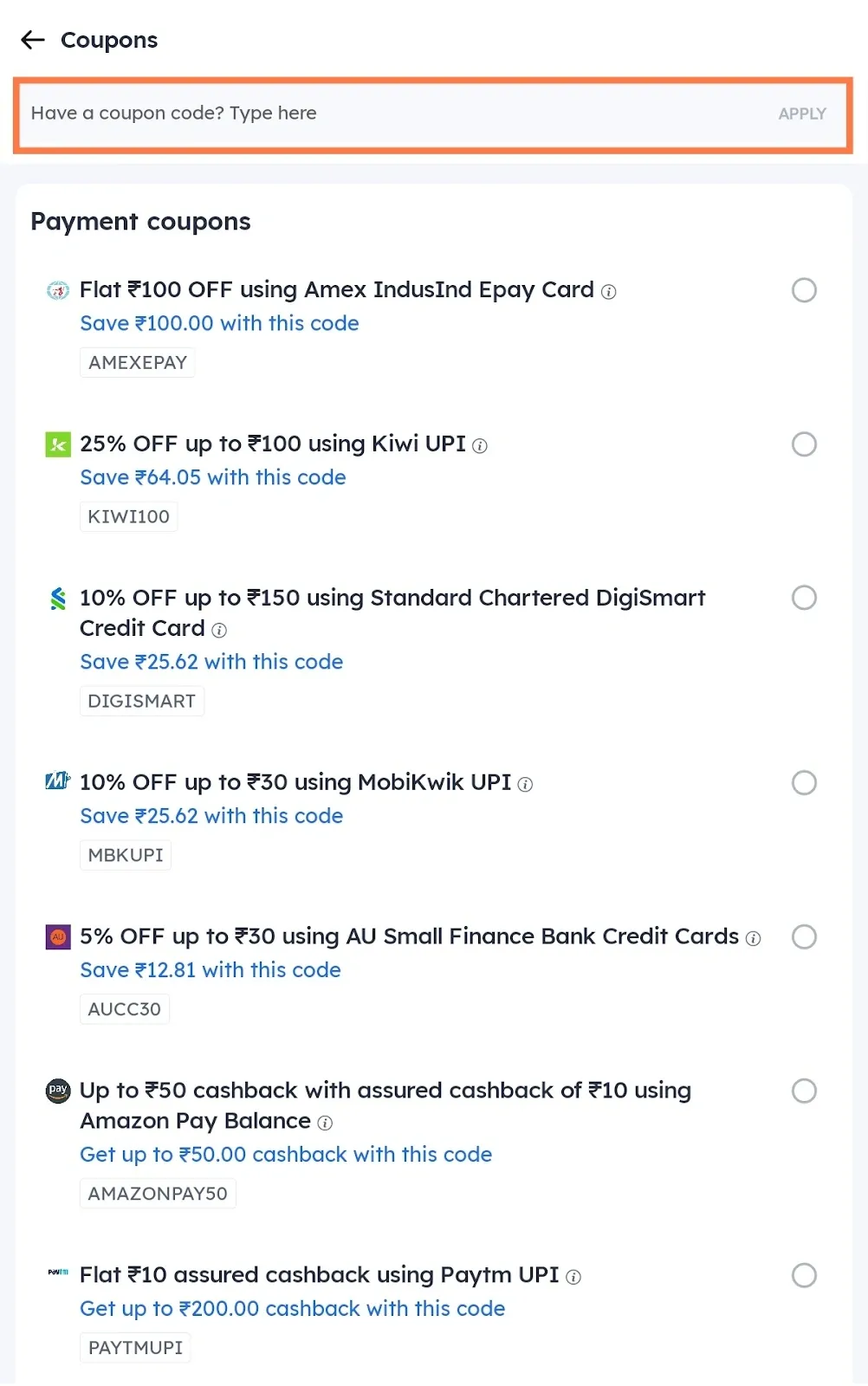
6. Address selection experience
Zomato updated its address selection option. Customers can now easily choose different addresses or add new addresses before placing an order.

7. Payment mode selection experience
The Zomato payment page lists multiple payment options, including cash on delivery, credit or debit cards, UPI payment, wallets, net banking, and pay later options.
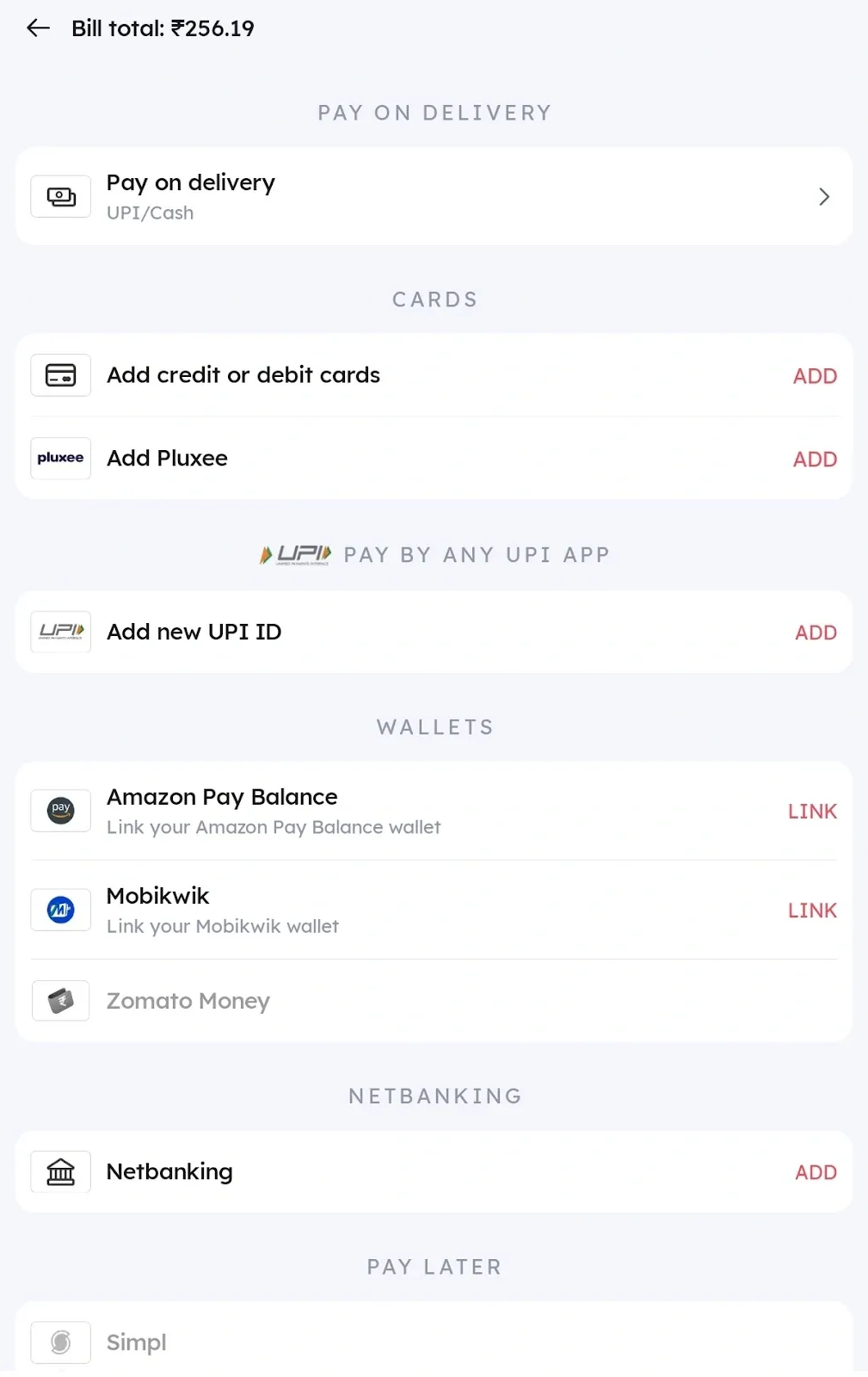
💡 Building a similar UI/UX design for your application is essential to attract and retain customers. If you don't have experience building the UI/UX design of your application, Tenet can assist you.
Our professionals use the right tools and advanced technologies to create prototypes for a Zomato-like online food delivery app.
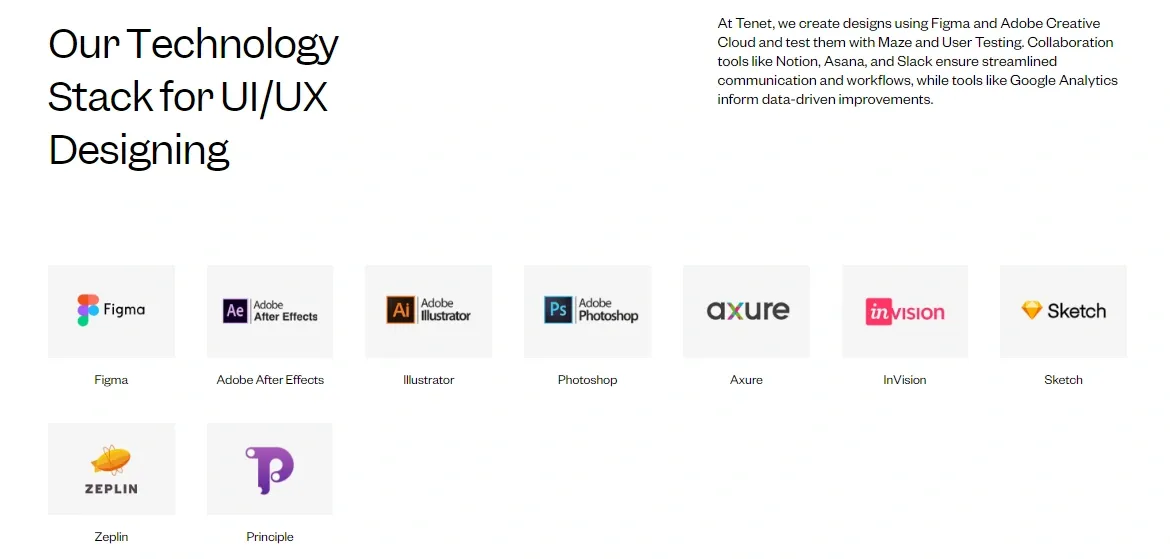
Here's a table listing the UI/UX design tools used by Tenet, along with their purpose in designing a Zomato-like app:
Step 5: Hire SaaS developers for the back-end and front-end development
After developing the UI/UX of your application, the next step is building an MVP. This requires deciding on SaaS architecture, building the back-end and front-end of the application, working on the database schema, and SaaS integrations.
The front end of your application is the user-facing side, while the back-end developer covers the core functionalities of your application.
Back-end development includes:
Front-end development includes:
There are multiple other tasks associated with cloning a Zomato app. Companies that don't have a strong in-house team outsource their development tasks to a third-party provider.
What else to add to your app?
1. Integrate maps and location services.
Zomato offers this feature, allowing delivery partners to locate their customers. Additionally, this location tracking helps the app make proper recommendations for restaurants within the customer's proximity.
2. Ensure secure payment gateway integration.
You must add a secured payment gateway for online payments. This includes card payments, UPI transactions, NetBanking, and integration with Pay Later applications. While integrating with payment gateways, you must implement security measures to avoid fraud.
3. Implement advanced search and filtering algorithms.
These algorithms ensure you can search for the best restaurants and cuisines in your area based on multiple factors, such as dish price, restaurant rating, trust markers, etc.
Tenet can assist you with SaaS development. We focus on developing scalable architecture, feature updates, performance optimisation, and robust security. The technology stack used in Tenet includes Angular, Node.js, Vue.js, HTML, and CSS.
What you can be concerned about is the data security measures. But Tenet ensures you remain stress-free. We follow:
- Non-Disclosure Agreements
- Secure Communication Channels
- Encrypted Data Storage
- Access Control Policies
- Regular Security Audits
Creating an MVP version helps you collect valuable feedback from early users on the application. It allows you to make necessary improvements and increase user retention.
Step 6: Test and Deploy the Application
After gathering the necessary feedback and integrating all the features into your application, the next step is to test it.
Some of the common tests performed on the application include functional testing to check that all features, such as user registration, ordering, payments, etc., work properly, UI/UX testing, performance testing, security testing, integration testing, and compatibility testing.
Additionally, you can perform a list of other tests related to food delivery, real-time tracking, and user experience.
Step 7: Focus on marketing
You need to focus on the advertising and marketing aspects of your application to acquire users, increase brand awareness, and grow your business. A strong marketing strategy helps attract new users and increase restaurant partnerships.
You can try digital advertising through social media, search engines, and influencer collaborations. These boost your visibility, while referral programs and discounts encourage user engagement.
If you are unsure how to market your new application, ask Tenet experts. We work with SEO, conversion rate optimisation, growth marketing, PPC management, email marketing, content marketing, and B2B marketing.
Zomato app workflow: How does Zomato platform work?
This following flowchart shows the complete Zomato platform workflow, outlining how users, restaurants, delivery partners, and admins interact step-by-step to complete a food delivery.

Important features to include in a Zomato-like App
1. User Features
User Registration and Profile Management
- Login/Signup: Users can register using their email, phone number, Google account, or social media profiles.
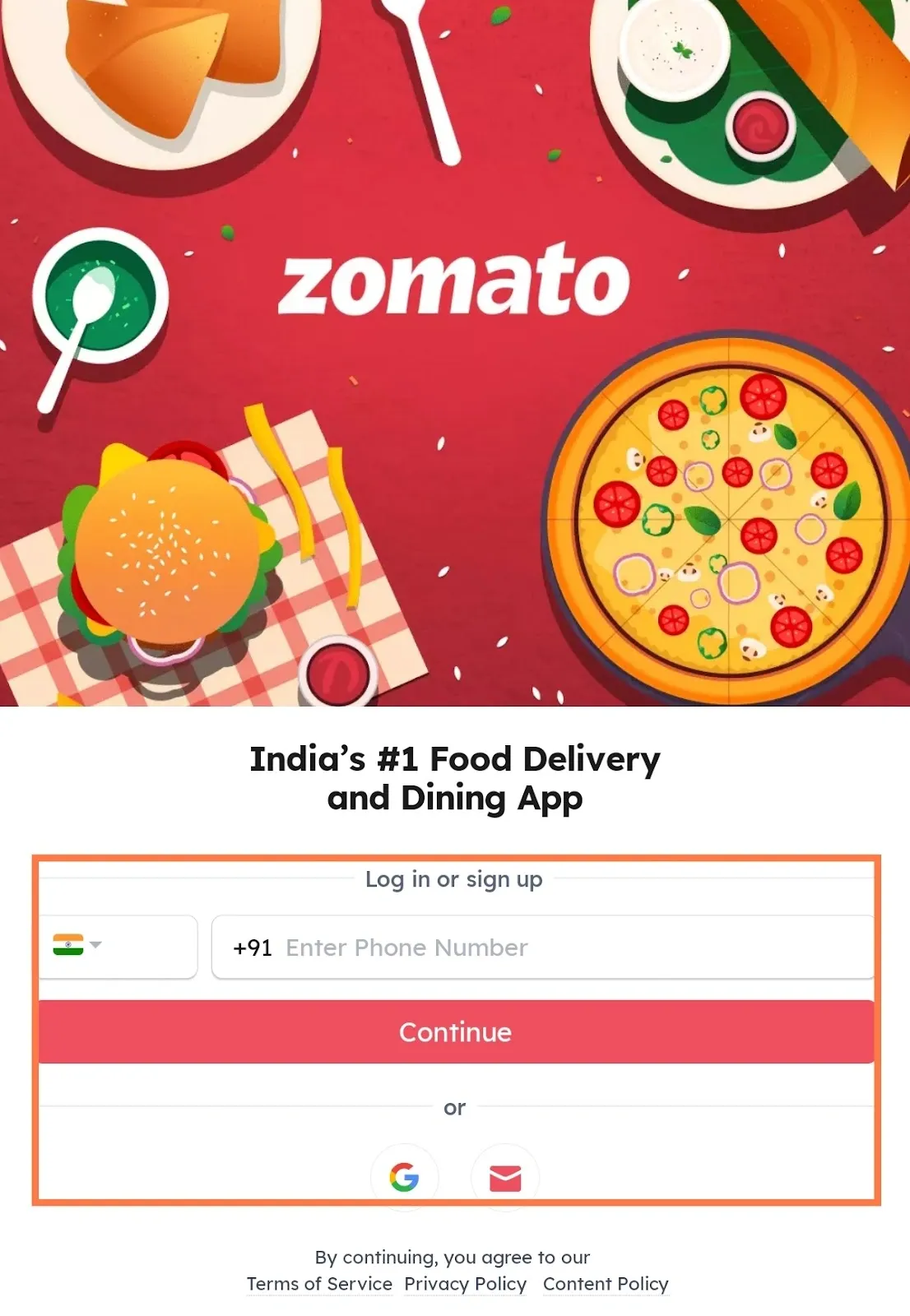
- Profile Setup: Users can manage their personal details, delivery addresses, payment methods, and order history.
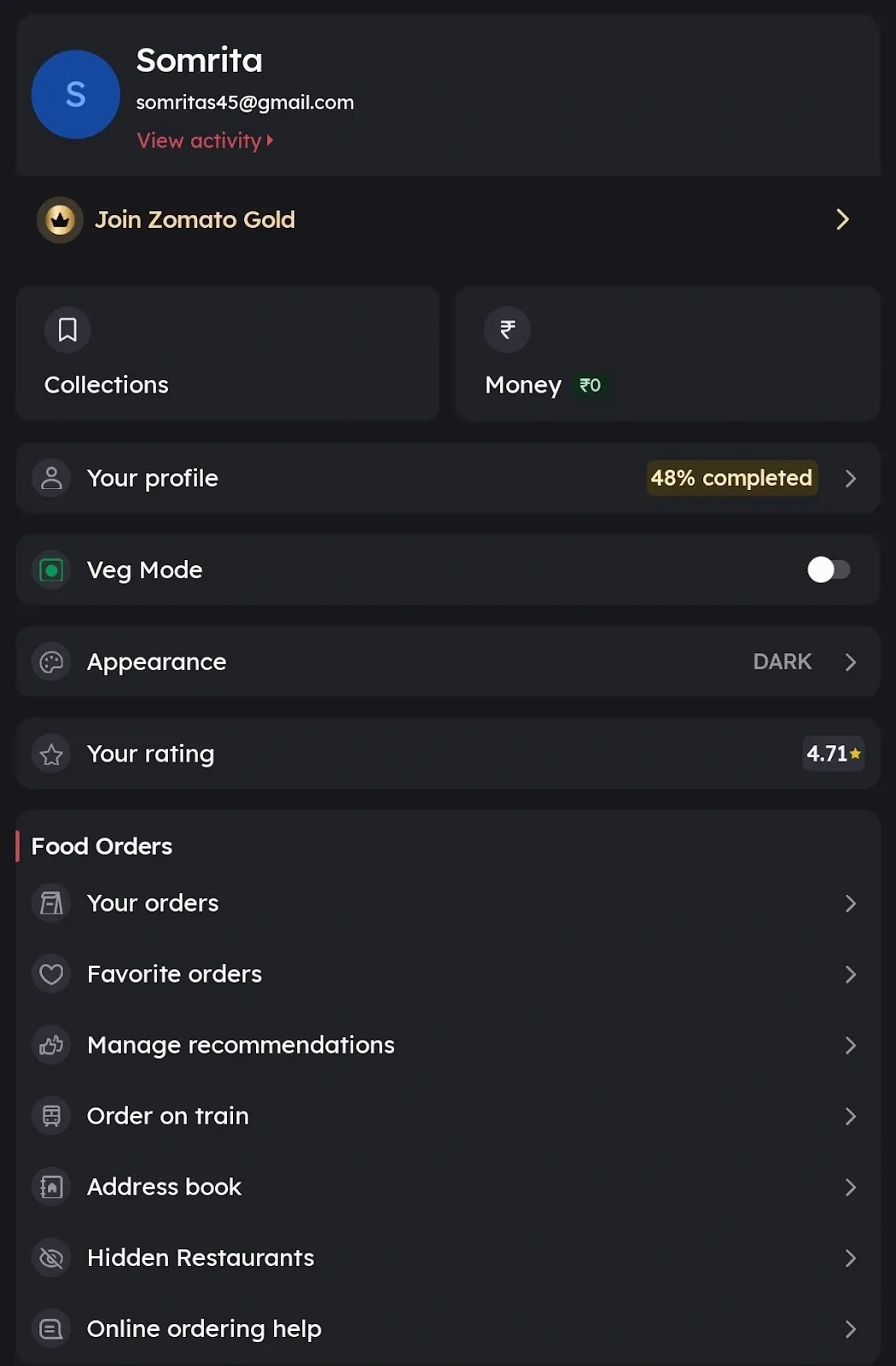
Restaurant Discovery
- Search and Filters: Users should be able to search for restaurants by name, cuisine, location, or type of food. Filters for ratings, price, and dietary preferences should be available.
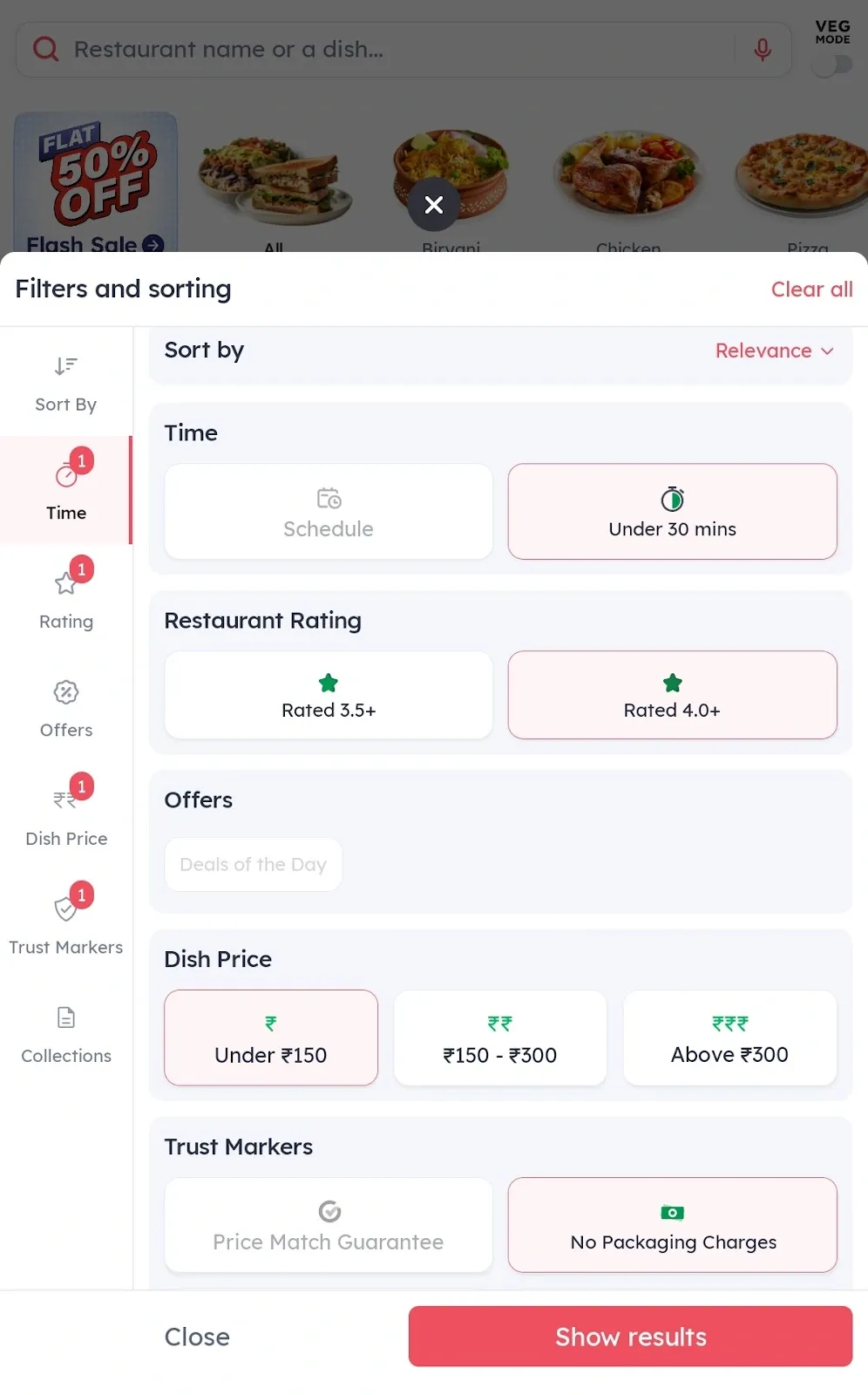
- Interactive Maps: The app should integrate with maps to help users find nearby restaurants.
- Restaurant Pages: Each restaurant should have a detailed profile with menus, images, reviews, hours of operation, and contact details.
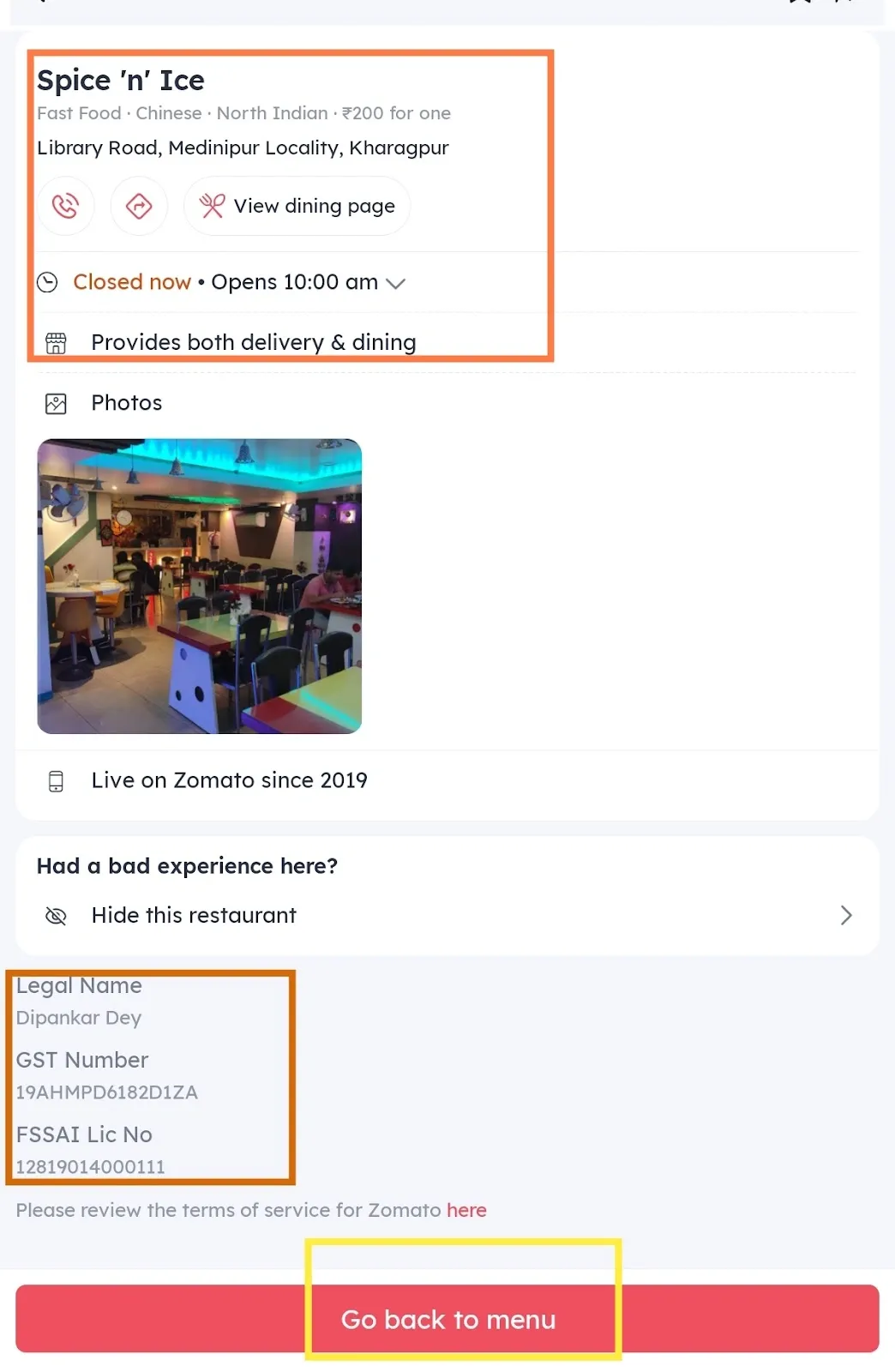
Menu and Ordering
- Menu Display: The app should display clear and well-organized menus with food descriptions, pricing, and customization options.
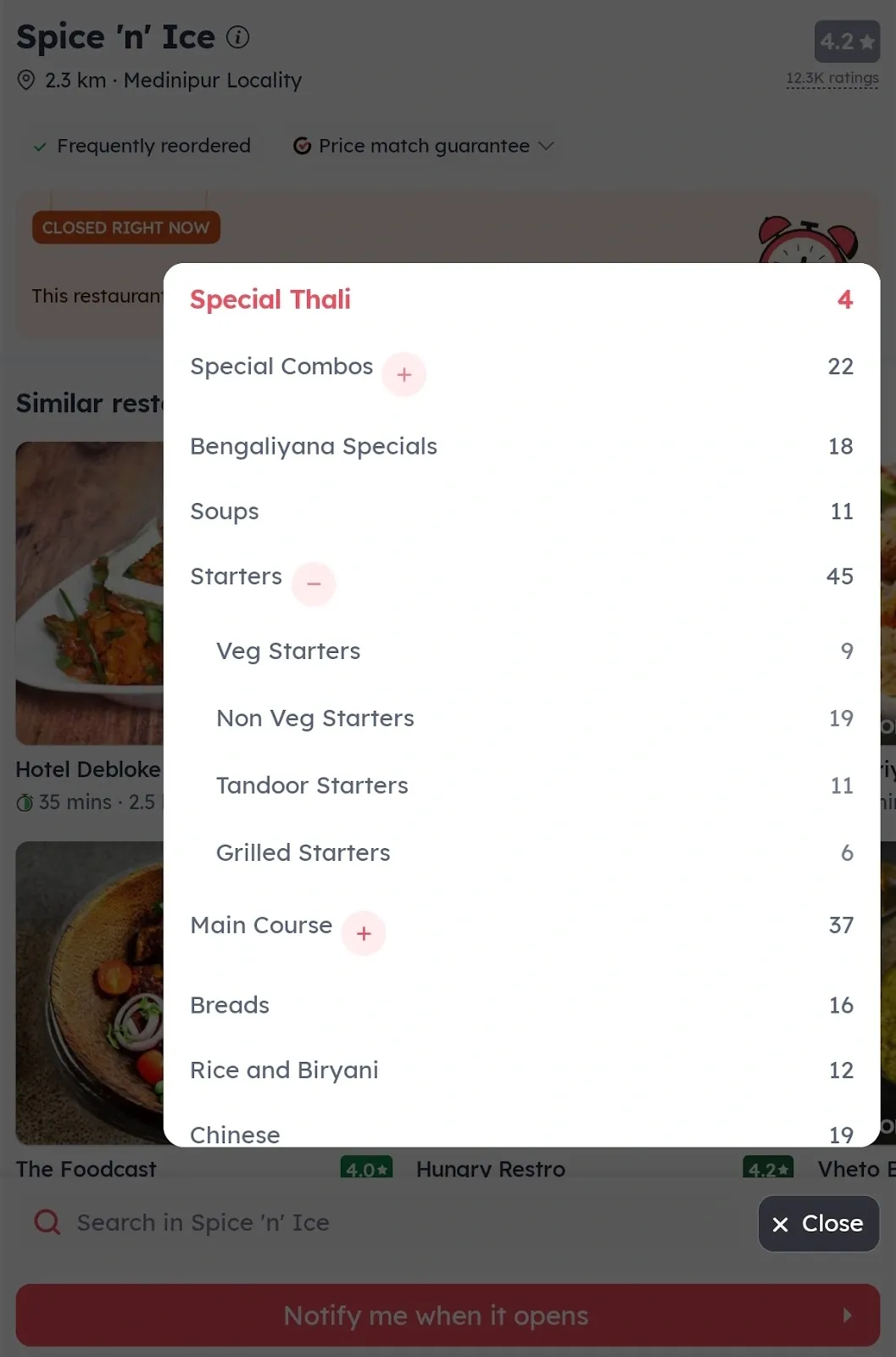
- Cart Management: Users should be able to add, remove, or modify items in their cart before proceeding to checkout.
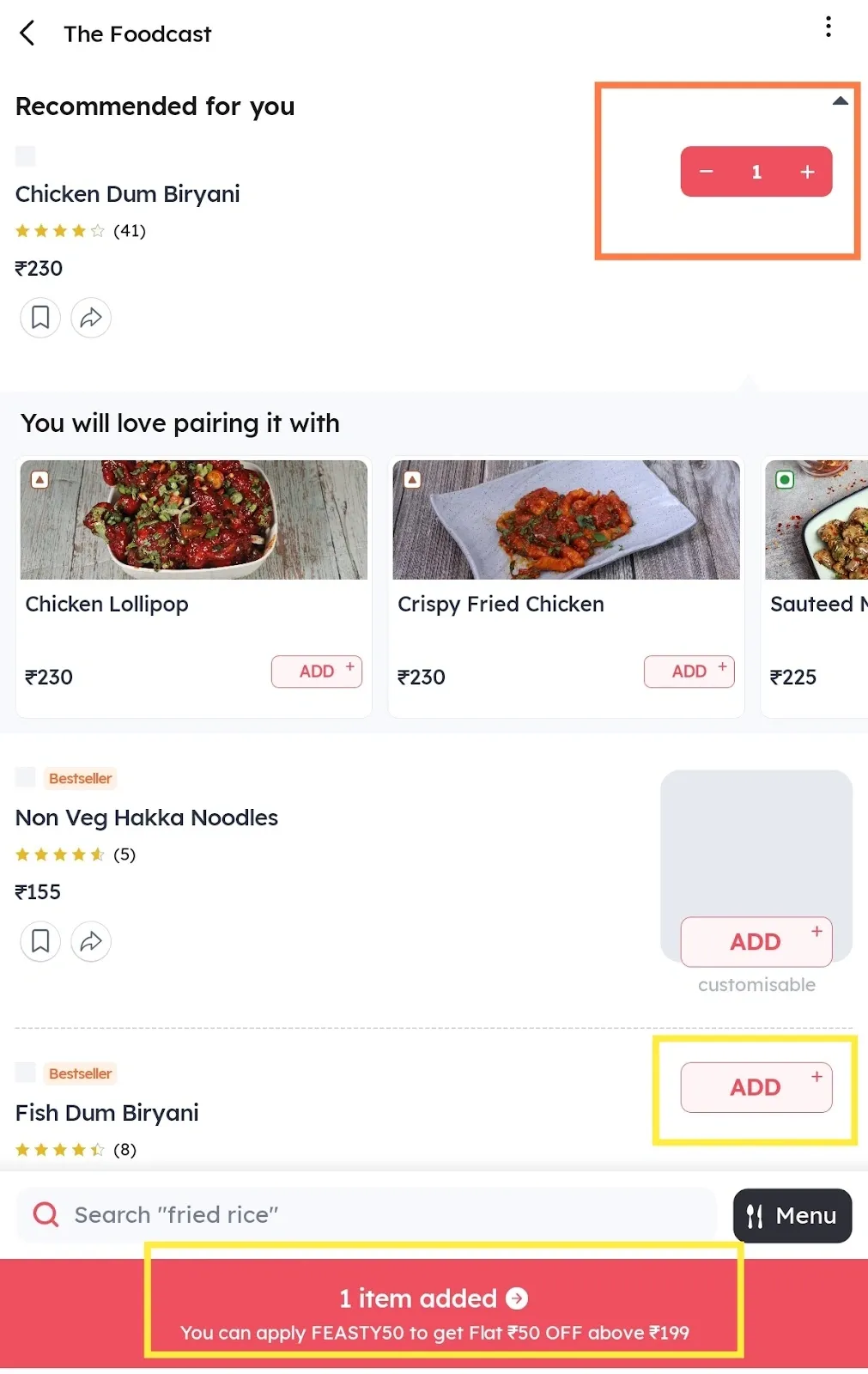
- Order Scheduling: Customers should have the option to place an order for immediate delivery or schedule it for a later time.
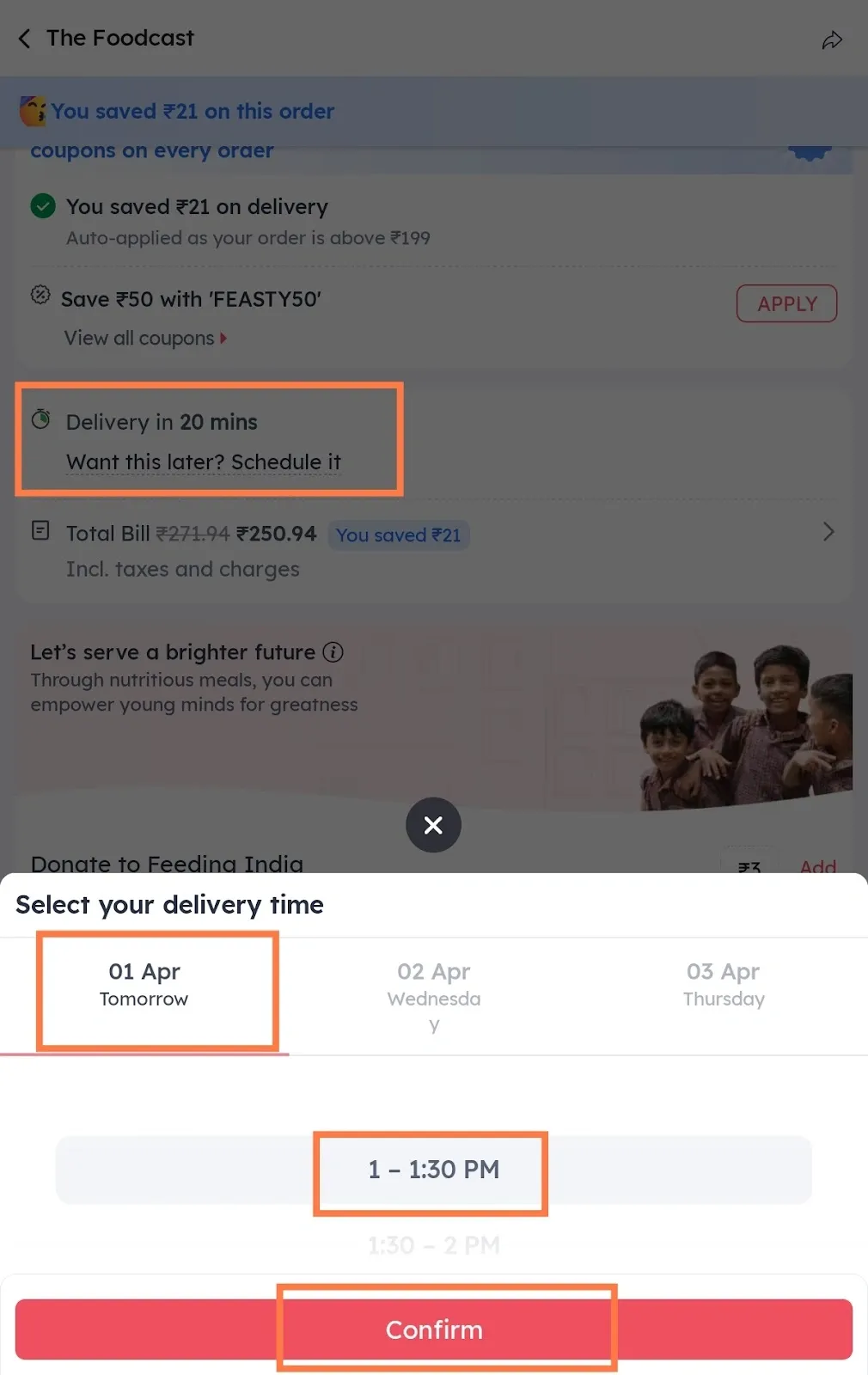
Payment Integration
- Multiple Payment Options: The app should support various payment methods, including credit and debit cards, digital wallets like Google Pay and PayPal, and cash on delivery.
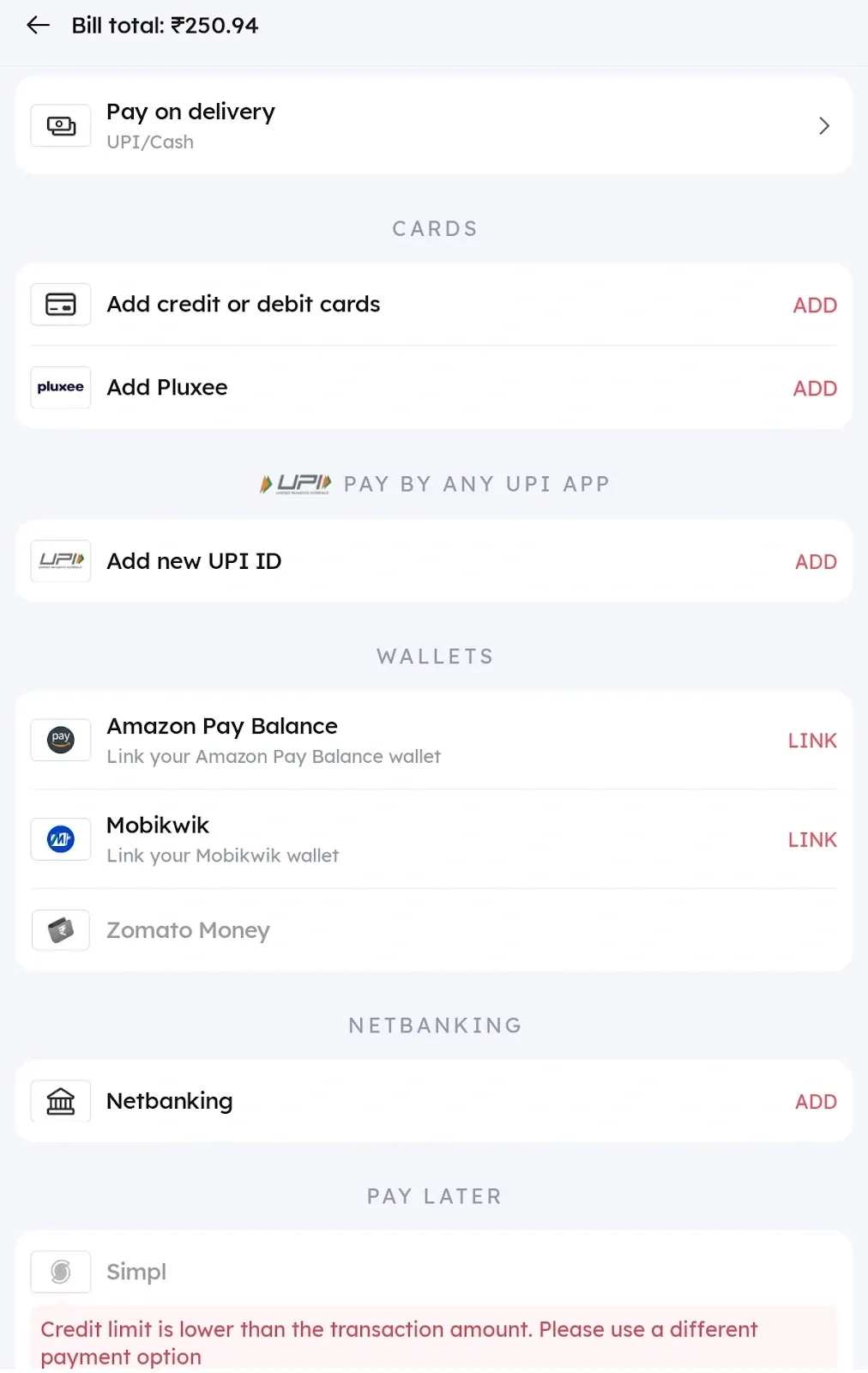
- Order Summary: Users should be able to view a transparent breakdown of the order, including item prices, taxes, and delivery charges.
Order Tracking
- Real-Time Tracking: Customers should be able to track their order status in real-time, from preparation to delivery.
- Notifications: The app should send push notifications for order confirmation, preparation status, and delivery updates.
Reviews and Ratings
- User Reviews: Customers should be able to rate and review restaurants and dishes based on their experiences.
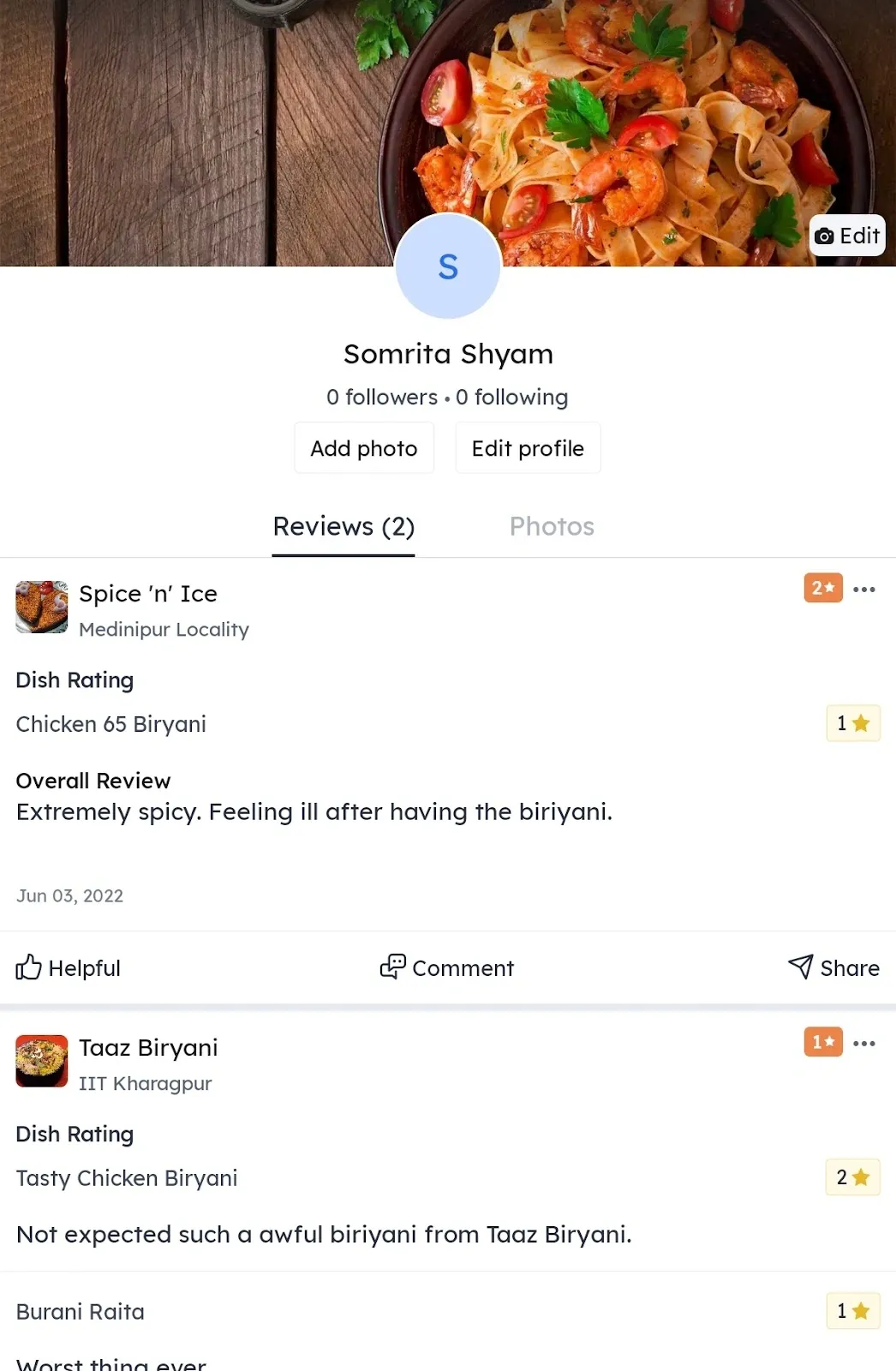
- Photo and Comment Reviews: Users should have the option to share food photos along with their detailed feedback.
Push Notifications
- Promotions and Offers: The app should send push notifications to inform users about discounts, deals, and loyalty rewards.
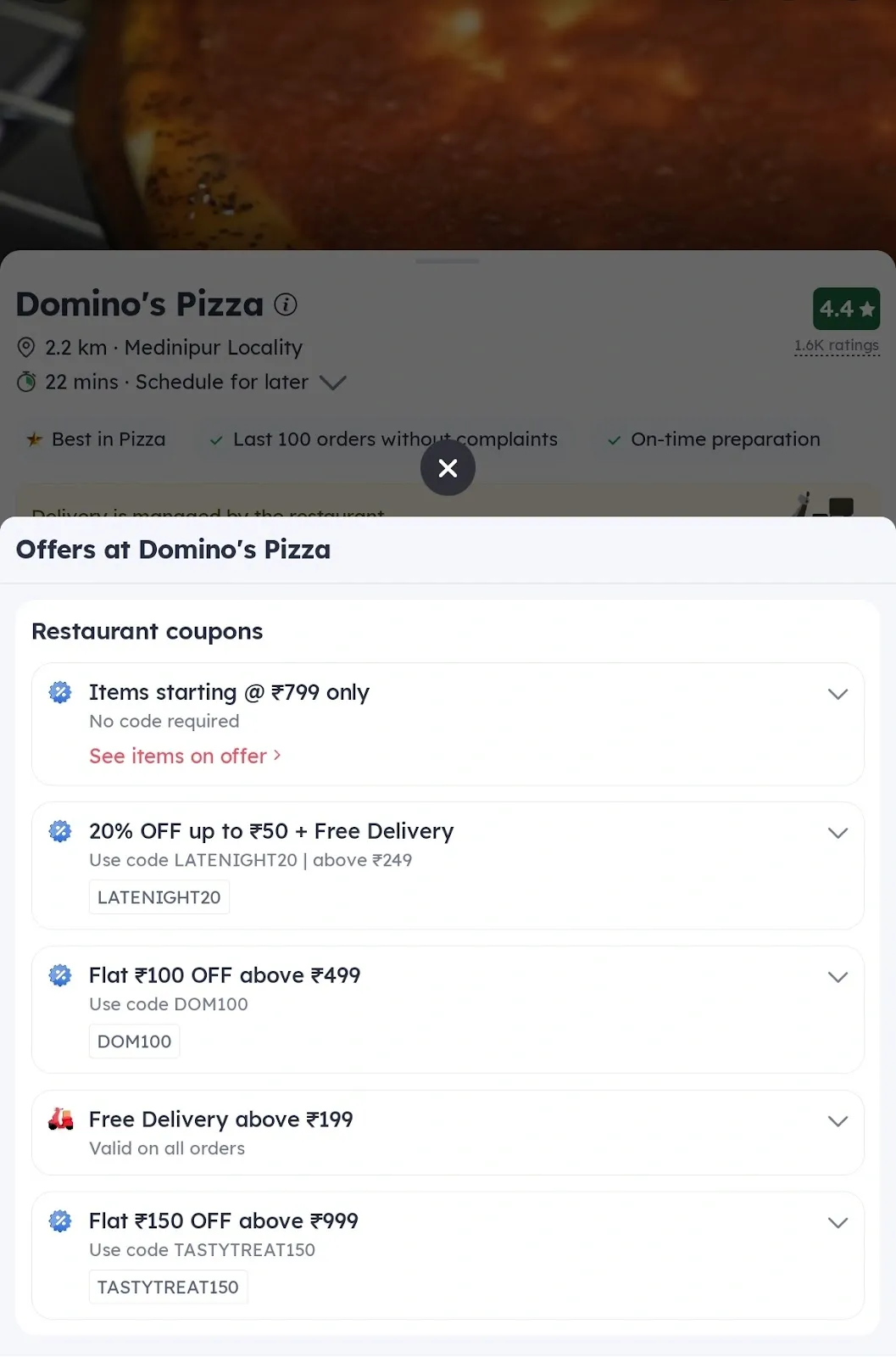
- Personalised Recommendations: The system should use AI to analyse order history and suggest restaurants and dishes tailored to user preferences.
2. Restaurant Features
Order Management
- Incoming Orders: The restaurant panel should provide real-time alerts and notifications for new orders. Restaurant owners should be able to accept or reject orders.
- Order Status Management: Restaurants should be able to update the status of orders, such as preparing, ready for pickup, or out for delivery.
Menu and Pricing Management
- Menu Editing: Restaurant owners should be able to update menu items, pricing, and availability in real-time.
- Promotions and Discounts: Restaurants should be able to offer special discounts and deals through the app to attract more customers.
Analytics and Reporting
- Performance Insights: The restaurant panel should provide data on sales, customer preferences, and popular menu items.
- Review Management: Restaurant owners should be able to monitor and respond to customer feedback to improve their service.
3. Delivery Partner Features
Delivery Assignment and Navigation
- Order Assignment: Delivery personnel should receive real-time notifications about new delivery tasks along with order details.
- Route Optimization: The app should integrate with navigation tools like Google Maps to provide the most efficient delivery route.
- Status Updates: Delivery personnel should be able to update order statuses, such as picked up, delivered, or delayed.
Earnings and Performance Tracking
- Earnings Reports: Delivery partners should be able to track their daily and weekly earnings through the app.
- Ratings and Reviews: Customers should be able to rate delivery service, helping to maintain quality and accountability.
4. Admin Dashboard
User and Restaurant Management
- User Management: Admins should have control over user accounts, restaurant approvals, and complaint resolution.
- Restaurant Verification: The platform should have a verification system to ensure that new restaurants meet the quality and service standards before going live.
Order and Payment Management
- Order Overview: Admins should be able to monitor all orders placed across different locations in real-time.
- Payment Management: The system should ensure smooth and secure transactions between customers, restaurants, and delivery personnel.
Analytics and Reporting
- Comprehensive Reports: The admin panel should generate detailed reports on app usage, sales trends, and customer behaviour to support data-driven decisions.
5. Additional Features
- Loyalty Programs: The app should incorporate reward points, discounts, or referral programs to retain customers and encourage repeat purchases.
- Multi-Language and Multi-Currency Support: The platform should support multiple languages and currencies to cater to different regions and international users.
Some of the unique features of Zomato that you can implement in your application:
- Geolocation
- Dineline
- In-app table booking
- Bookmarks restaurant reference list
- Group ordering
- Pure vegetarian mode
- Schedule order
- Food gift card
- Food delivered to your train seat
- Food rescue
💡 Related Guides on building applications:
- How to Create Your Dating App in EASY Steps
- How to make an app like Airbnb (Important Steps)
- How to Make an App Like Uber?
How to find app developers to make your app like Zomato
There are mainly two ways to make your app like Zomato:
Build an in-house team
You can hire developers for full-time or part-time. Many entrepreneurs aren't yet ready to outsource their projects due to trust, privacy, or other concerns, so hiring an in-house team is the best option.
However, an in-house team can be costly because you need a full-stack developer or a separate back-end and front-end developer, marketing team, researcher and analysts, lawyer, etc.
Also, you need to train them regularly to stay updated with the latest trends and regulations in your area and industry.
Outsource development
If you have budget constraints but want to access top developers, outsourcing is the best option. Also, if you don't have time to search for and interview talents and maintain them regularly, outsource the task.
At Tenet, we work with industry experts. You tell us all the requirements, budget, and time frame, and our experts will build a better MVP than your idea.
For example, you can see our work for Al-Rayhan, a restaurant in Dubai. They wanted to implement a smart ordering system for their restaurant to make dining easy for customers.
Here is what we did:
Tech stack to build an app like Zomato/ How does Zomato platform work?
- No action is required from the writer
- Share apps and tools used by Zomato
- Get data from Wappalyzer

What are the benefits of building an app like Zomato?
Faster Market Entry
Developing a food delivery app like Zomato allows you to enter the market quickly by leveraging successful business models. By using their pre-built frameworks, APIs, and cloud-based solutions, developers can speed up the development process and launch the app faster.
Integrate Best-in-Class Features
Zomato includes advanced features like AI-powered food recommendations, real-time GPS tracking, and secure digital payments. By following the same approach in your application, you can create the same user experience. You can use machine learning for personalised suggestions, chatbots for customer support, and automated delivery management systems.
Get Access to an Established User Base
The food delivery industry already has a large user base. By building an app with an intuitive UI/UX, strong SEO strategies, and third-party integrations (such as Google Maps and social media login) similar to Zomato, you can attract their existing audience and convert them into your customers.
Implement Better Monetization Strategies
Zomato generates revenue through multiple channels, including restaurant commissions, in-app advertising, premium subscriptions (Zomato Gold), and delivery charges. A new app can adopt similar revenue models to make better income and maximise profits.
Save Time and Costs
Using cloud computing, third-party APIs, and no-code/low-code development tools can significantly reduce development costs and time. Instead of building an entire ecosystem from scratch, you are following an already-built application, which is a time and cost-saver.
Better Scalability
Zomato started as a restaurant review platform and later expanded into food delivery, grocery delivery, and dining-out services. A well-structured app with a scalable backend, microservices architecture, and cloud storage can easily expand to multiple cities, support higher traffic, and introduce new services without major technical challenges. By following its structure and features, you can scale your application better.
Zomato Business model
The Zomato business model comprises three parts: restaurant owners, platform owners, and delivery assistants. It provides restaurants access to the platform to do business. On the other hand, it acts as a restaurant finder for users and helps them get food on time.
Zomato operates on a platform-based business model, connecting consumers, restaurants, and delivery partners through its digital ecosystem. The key components of its business model include:
- Two-Sided Marketplace: Zomato acts as an intermediary between customers and restaurants, ensuring food searching, ordering, and delivery. It provides a seamless experience for users while helping restaurants expand their reach to more customers.
- Strong Delivery Network: Zomato has its own group of delivery partners who fulfil food orders from restaurants within a short recomended time. This hybrid approach ensures efficient order fulfilment.
- Restaurant Searching & Engagement: The platform offers restaurant listings, user reviews, ratings, and menus, helping consumers make informed dining choices. Restaurants benefit from increased customer visibility on the platform.
- B2B Services: Zomato provides backend support to restaurants through services like Hyperpure. It supplies fresh ingredients and kitchen essentials. Its white-label cloud kitchen solutions also help scale food brands.
- Technology & Data-Driven Operations: Zomato leverages AI, data analytics, and machine learning to optimise delivery times, recommend restaurants, and personalise user experiences.
Overall, Zomato’s business model revolves around creating a tech-enabled food ecosystem that enhances customer convenience. It also supports restaurant growth and food delivery efficiency.
The two unique concepts of Zomato are:
- Feed India: Zomato asks all its users to contribute a small amount, like ₹3, when placing an order on the app. This money is used to feed needy children.
- Food rescue: Zomato implemented this amazing strategy to reduce food wastage. Whenever an order is cancelled near your location, Zomato will notify you. You can then order that item at a discounted price.
How does Zomato make money?
Zomato makes money in multiple ways.
- Food delivery fee: As an online food delivery app, Zomato earns a part of the revenue made from delivery fees.
- Commission from restaurants: Zomato earns a commission from restaurants for each order placed via their application.
- Advertisement fee: Businesses can display themselves with Zomato’s advertising and promotional services. It includes featuring their listings, running targeted ad campaigns, and special deals to attract customers. In return, businesses pay an advertising fee to the company.
- Subscription: Zomato earns from customers through a subscription-based model. Users can purchase their Zomato-Gold membership with a minimum charge and enjoy benefits for the next three months.
- Earn money by sharing data: The company holds a huge database on consumer preferences, dining habits, restaurant performance, ratings and reviews, etc. Zomato shares this data and analytics with restaurants to improve their business and charges a small fee in return.
How much does it cost to create an app like Zomato?
To create an app like Zomato costs you around $50,000-$200,000 and more. This cost of developing an application depends on its complexity, number of features, and location of the development team.
A basic application with only the essential features may cost you around $30,000-$50,000.
On the other hand, a fully featured application with real-time tracking, AI-based recommendations, and advanced analytics can cost around $200,000+.
Here's a rough estimate of the factors affecting the costs of developing an app similar to Zomato:
FAQs
What programming language was used to make Zomato?
The programming language used to make Zomato was Python and Django for the back-end development, ReactJS, HTML, and CSS for the front-end development, Java and Kotlin for Android, Swift for iOS, and MySQL and MongoDB for databases.
How technically difficult is it to develop an app like Zomato?
To develop an app like Zomato is technically very difficult because of the geolocation accuracy, payment gateway integration, real-time order updates, restaurant menu management, delivery driver coordination, etc. There are so many features you need to implement in a Zomato-like application that it is hard. However, Tenet makes it easy with our experience in the domain and delivering promising results for years.
What back-end tech stack to use to code Zomato from scratch?
To code Zomato from scratch, the back-end tech stack to use includes Python, Django, and Node.js, along with PostgreSQL for databases. This ensures efficient order processing, user interactions, and restaurant management. Older Zomato system used Ruby on Rails.
Connect with our developers for a free consultation call
Connect with our developers for a free consultation call

Got an idea on your mind?
We’d love to hear about your brand, your visions, current challenges, even if you’re not sure what your next step is.
Let’s talk
